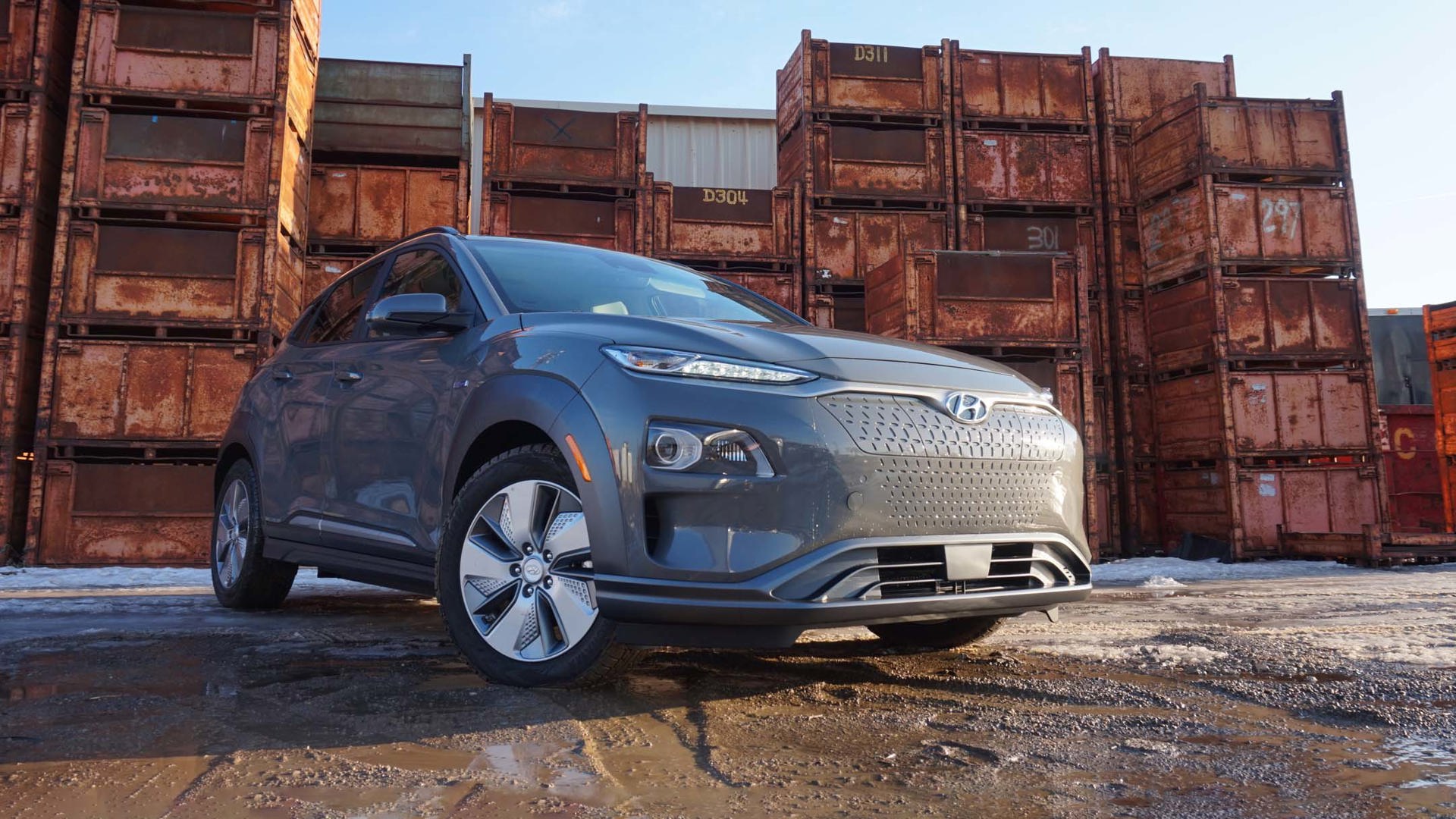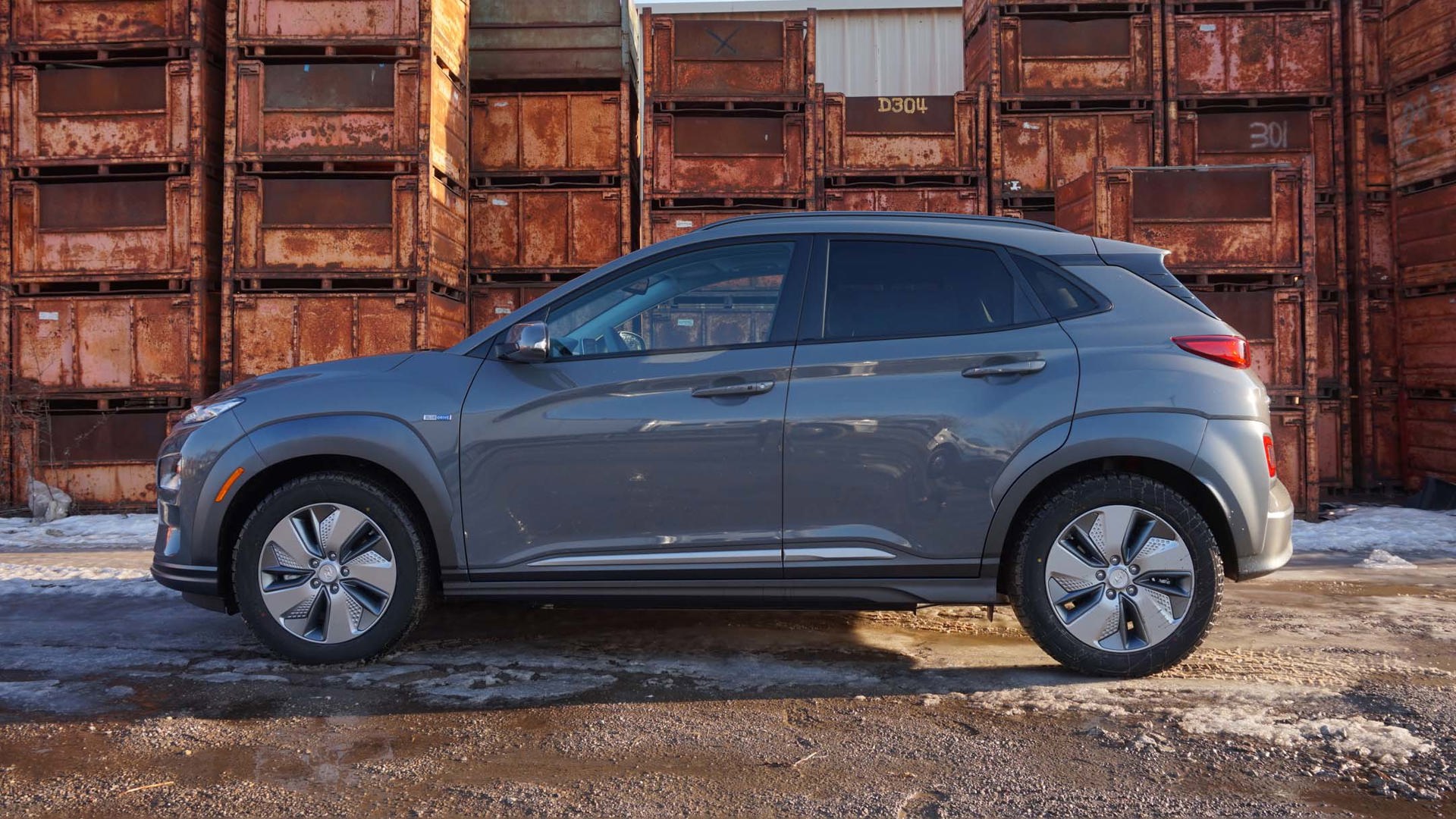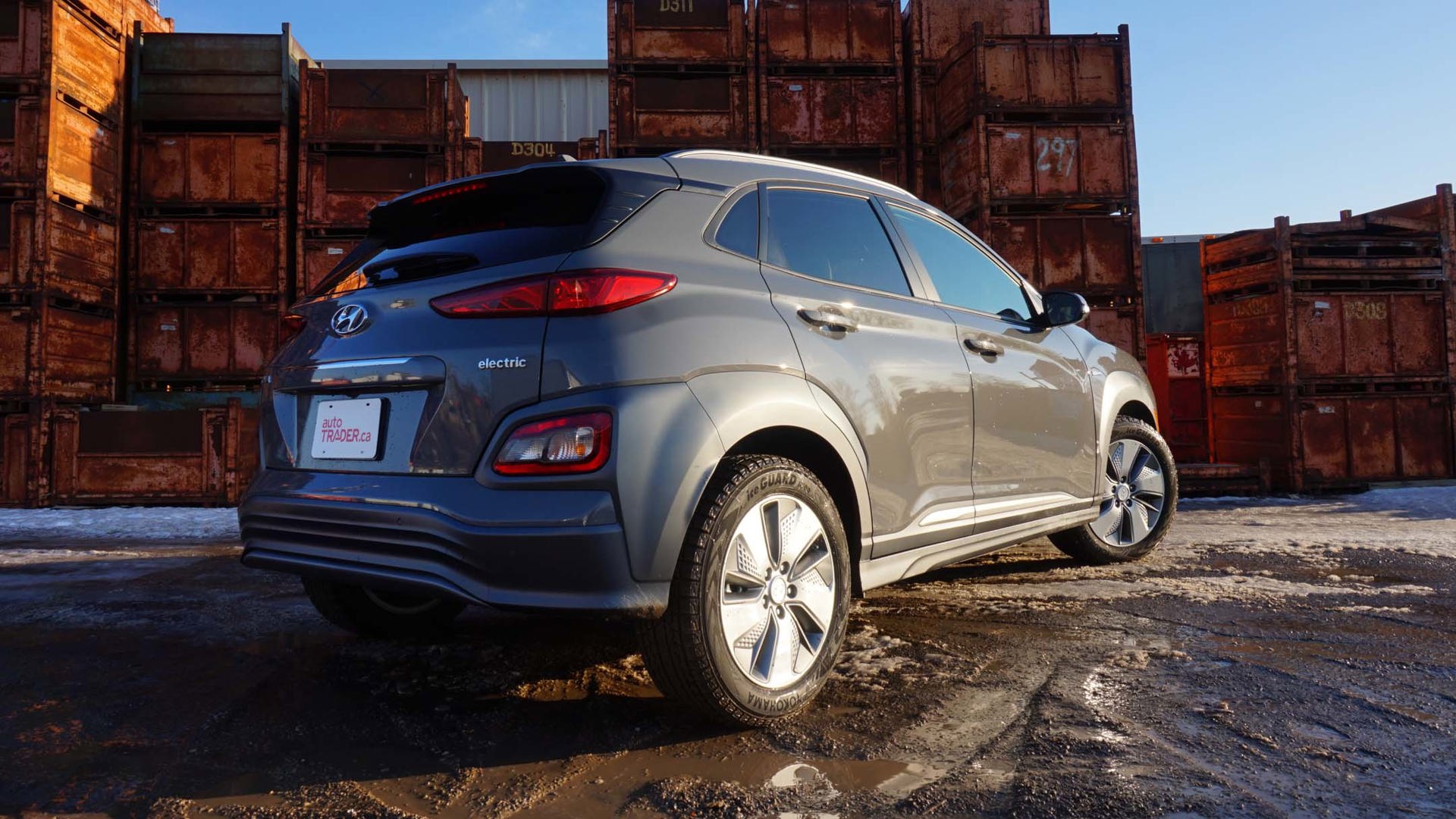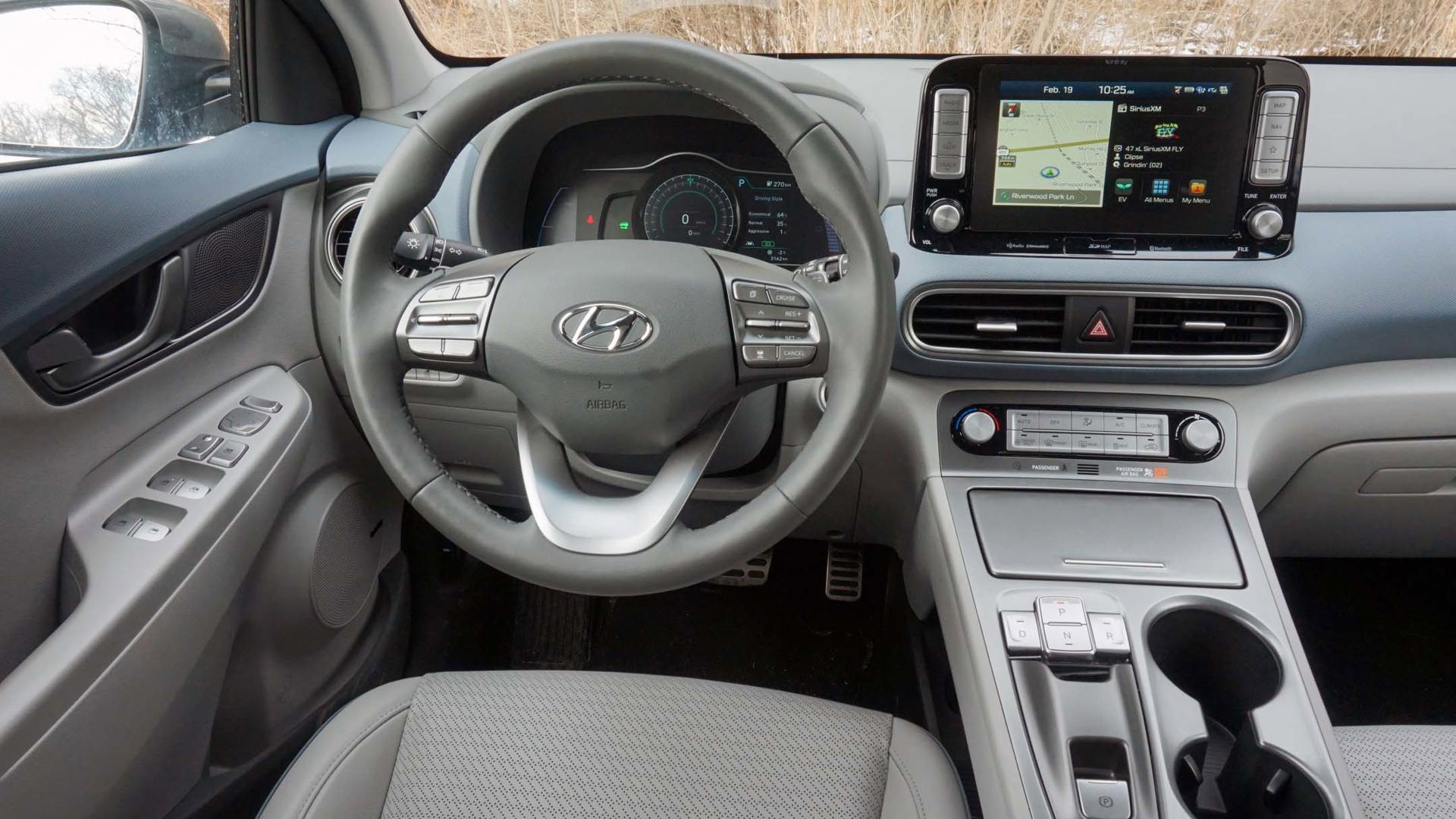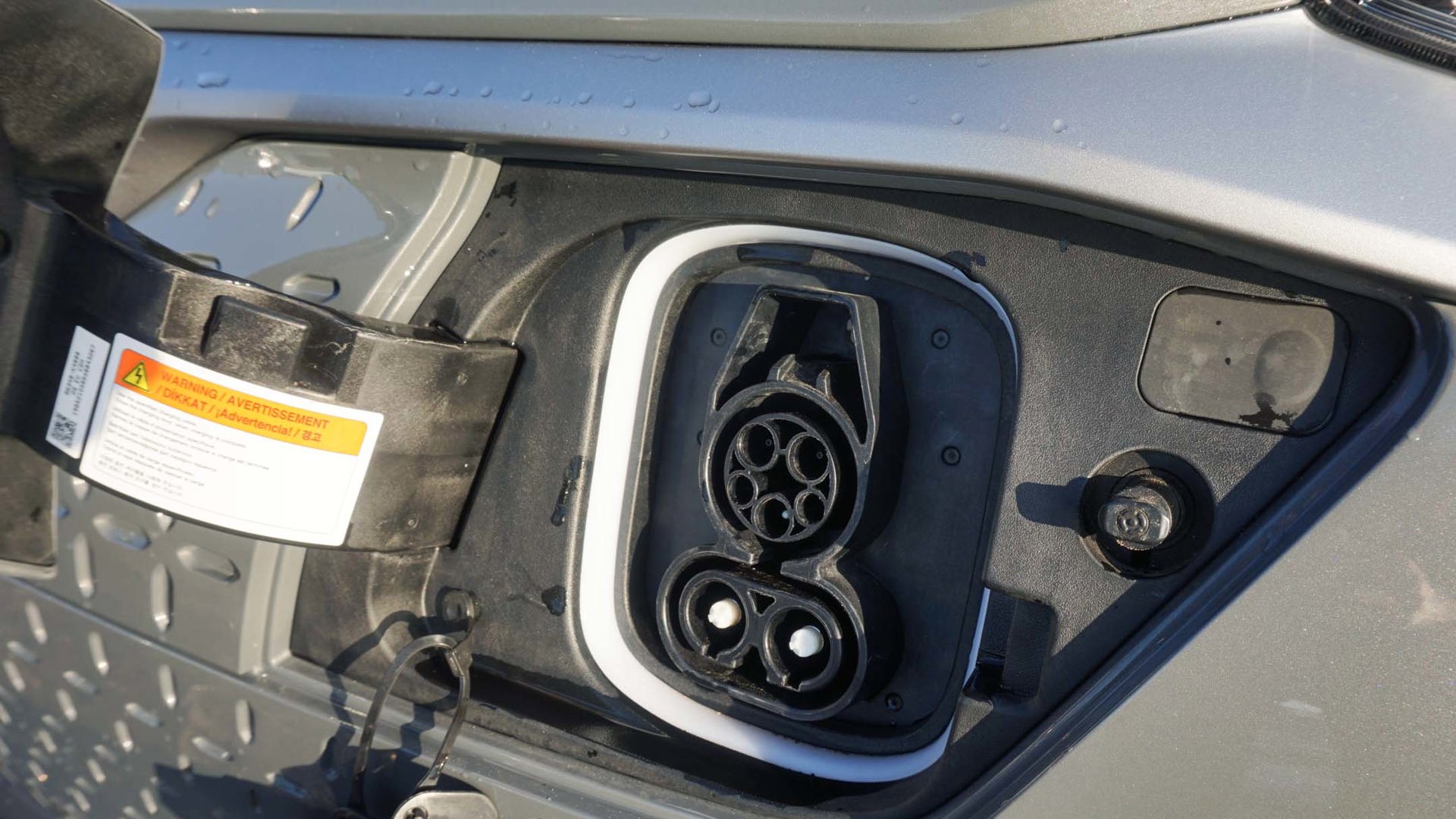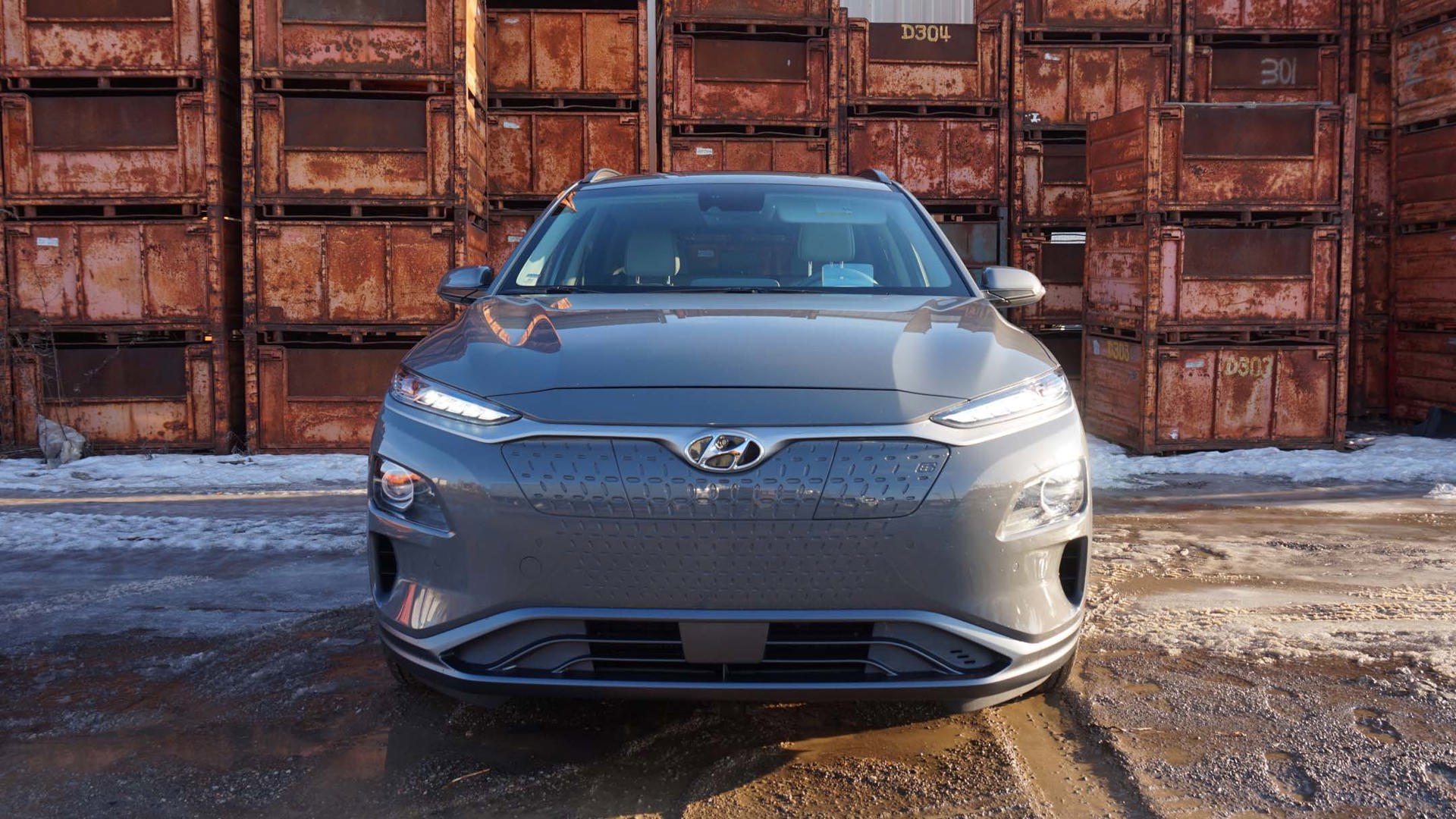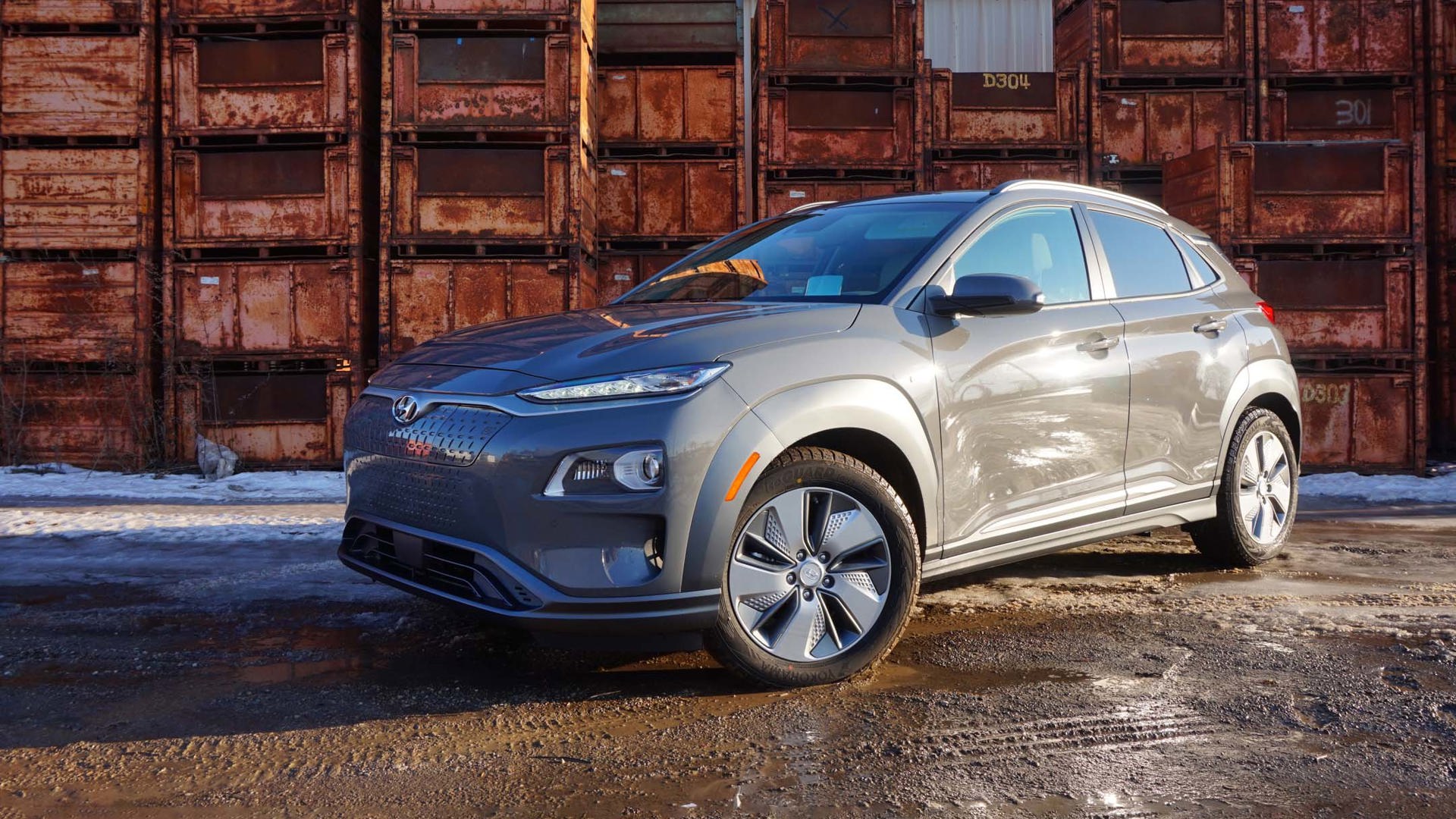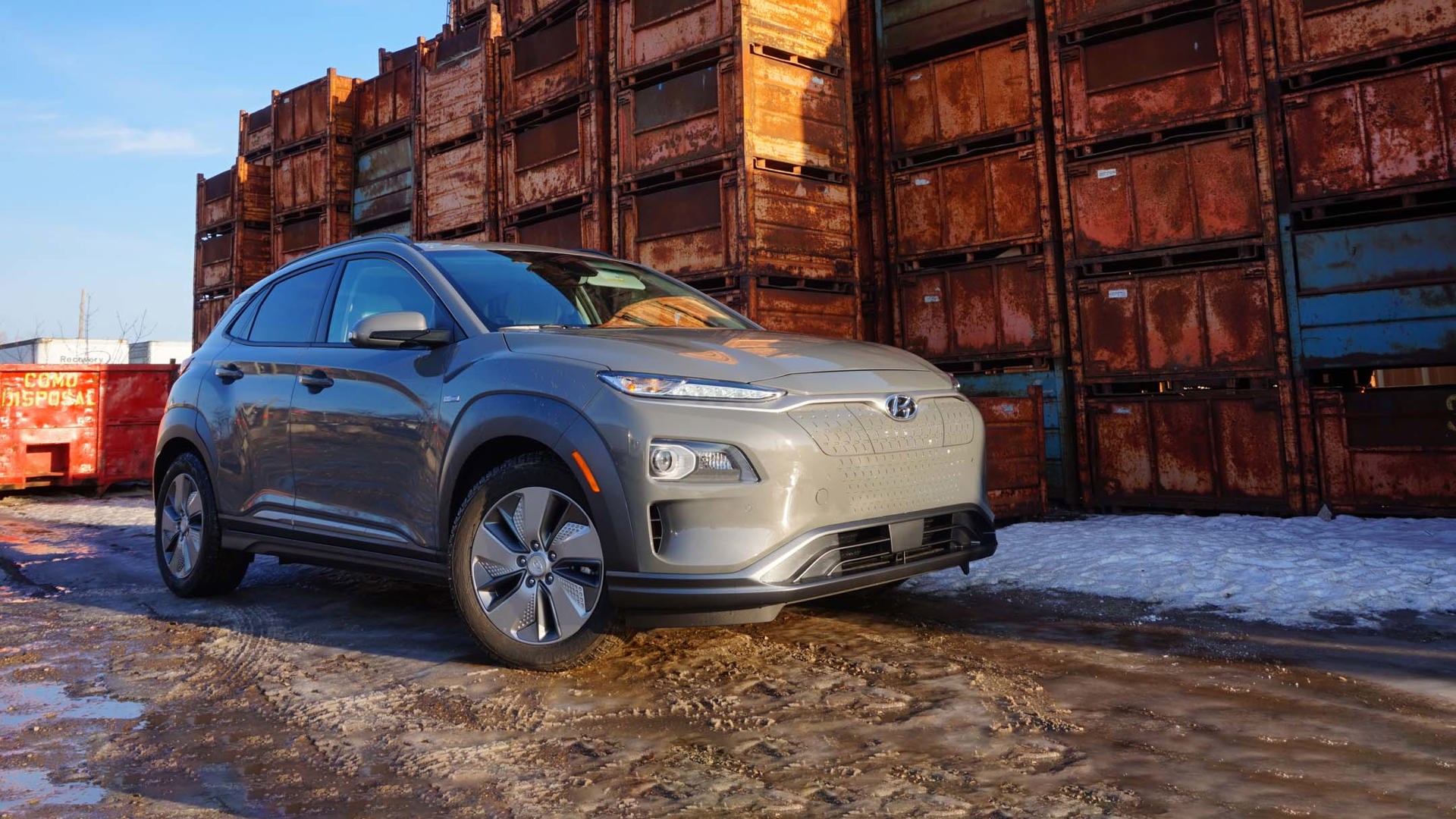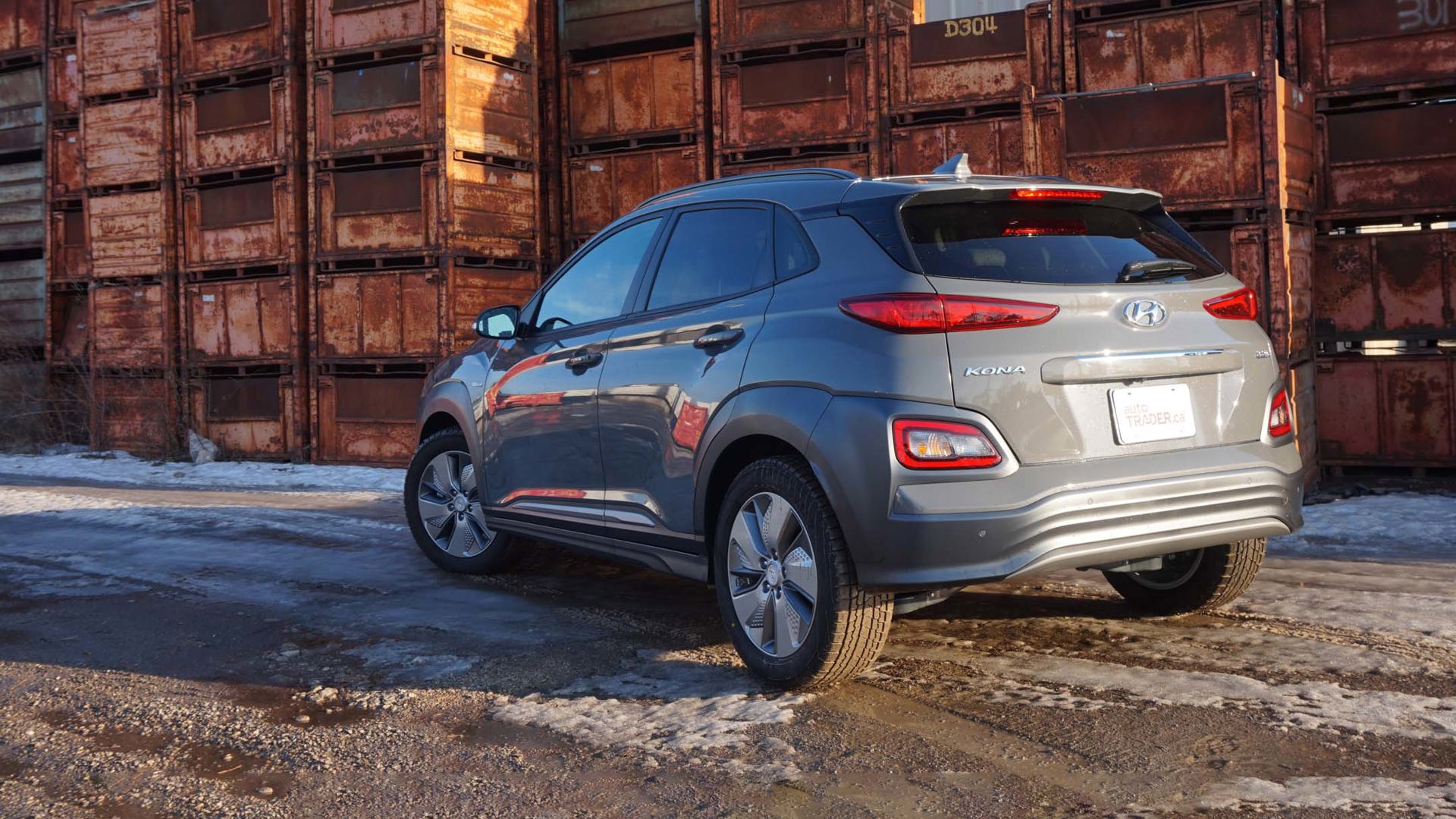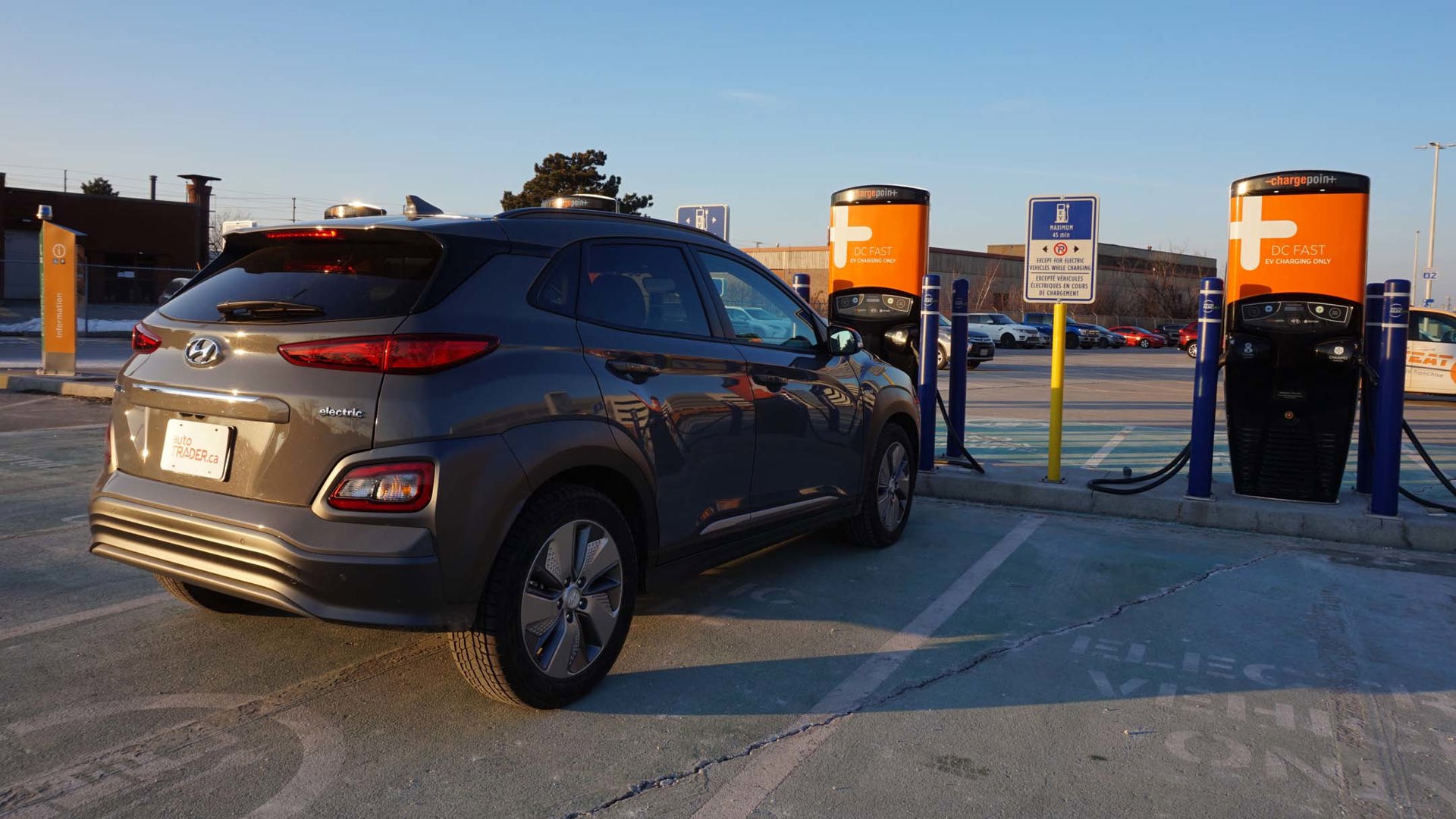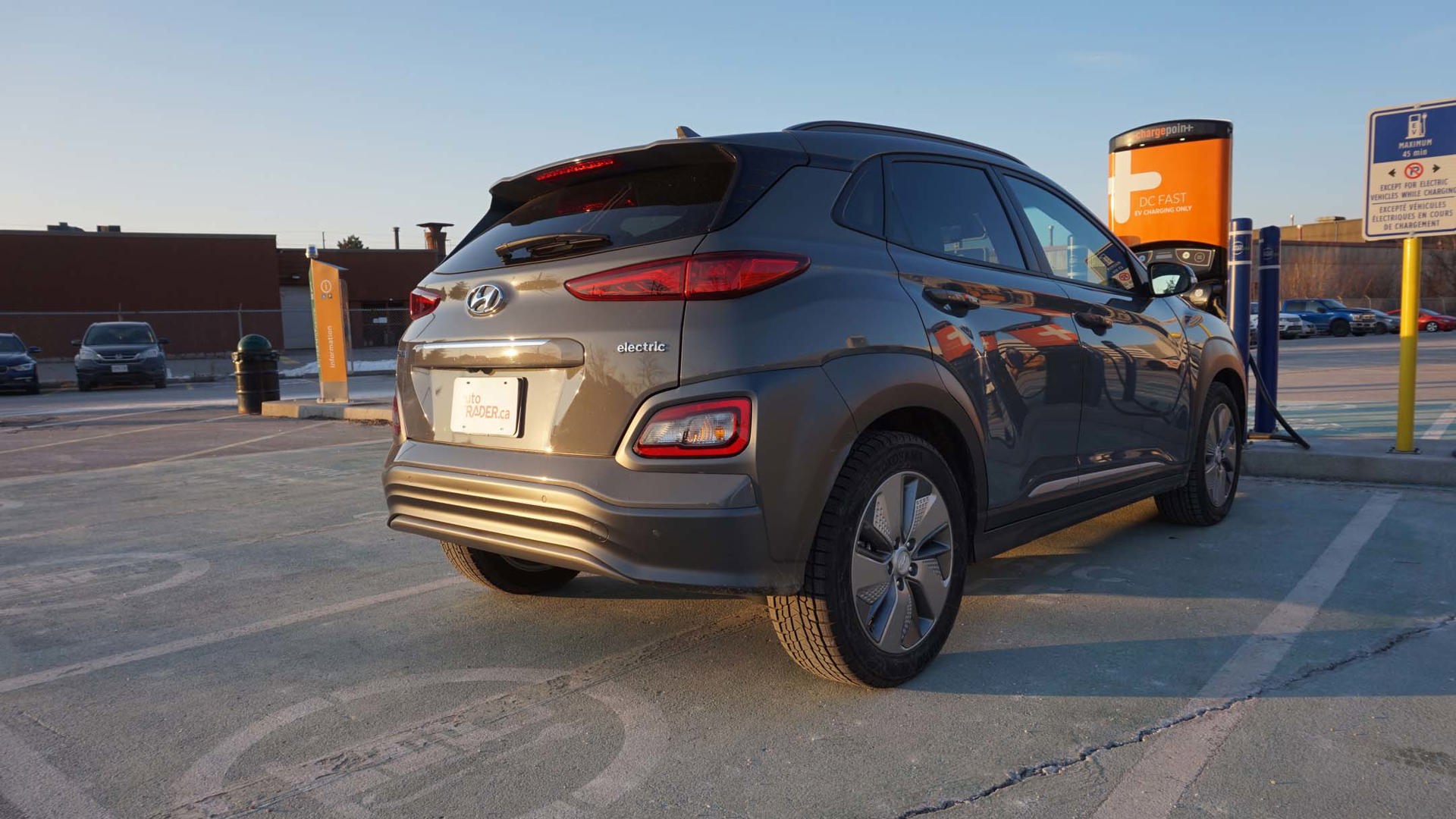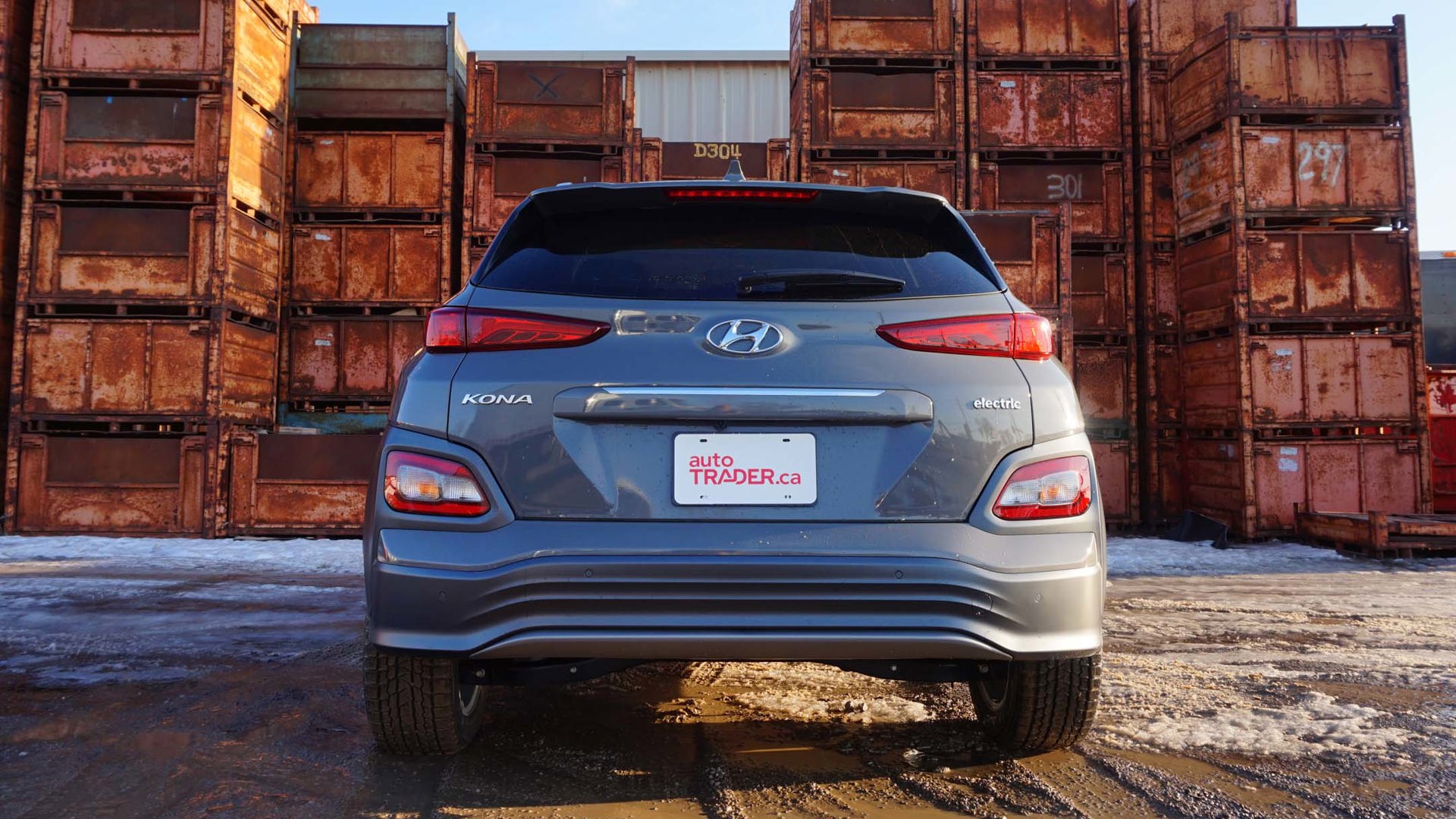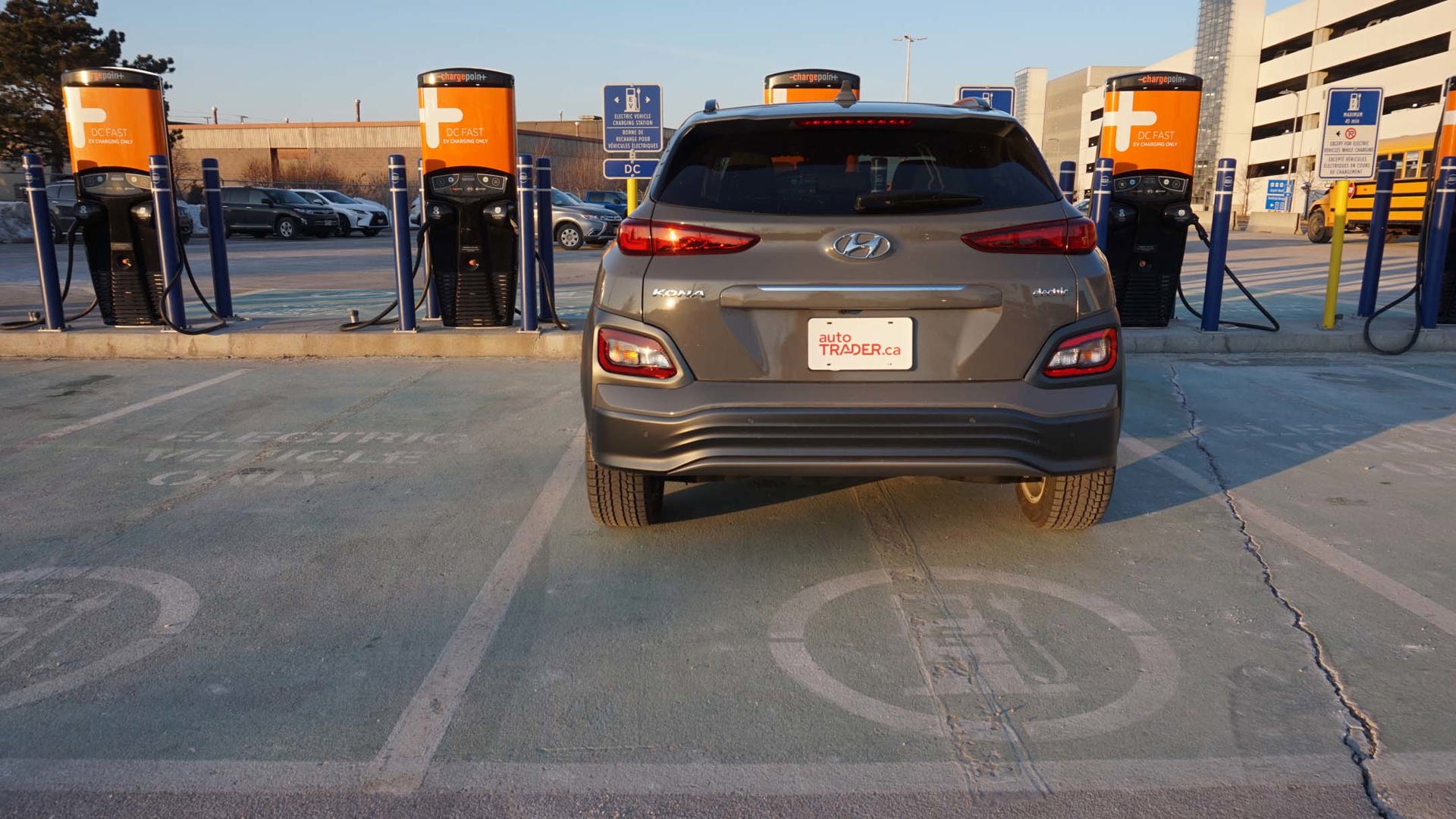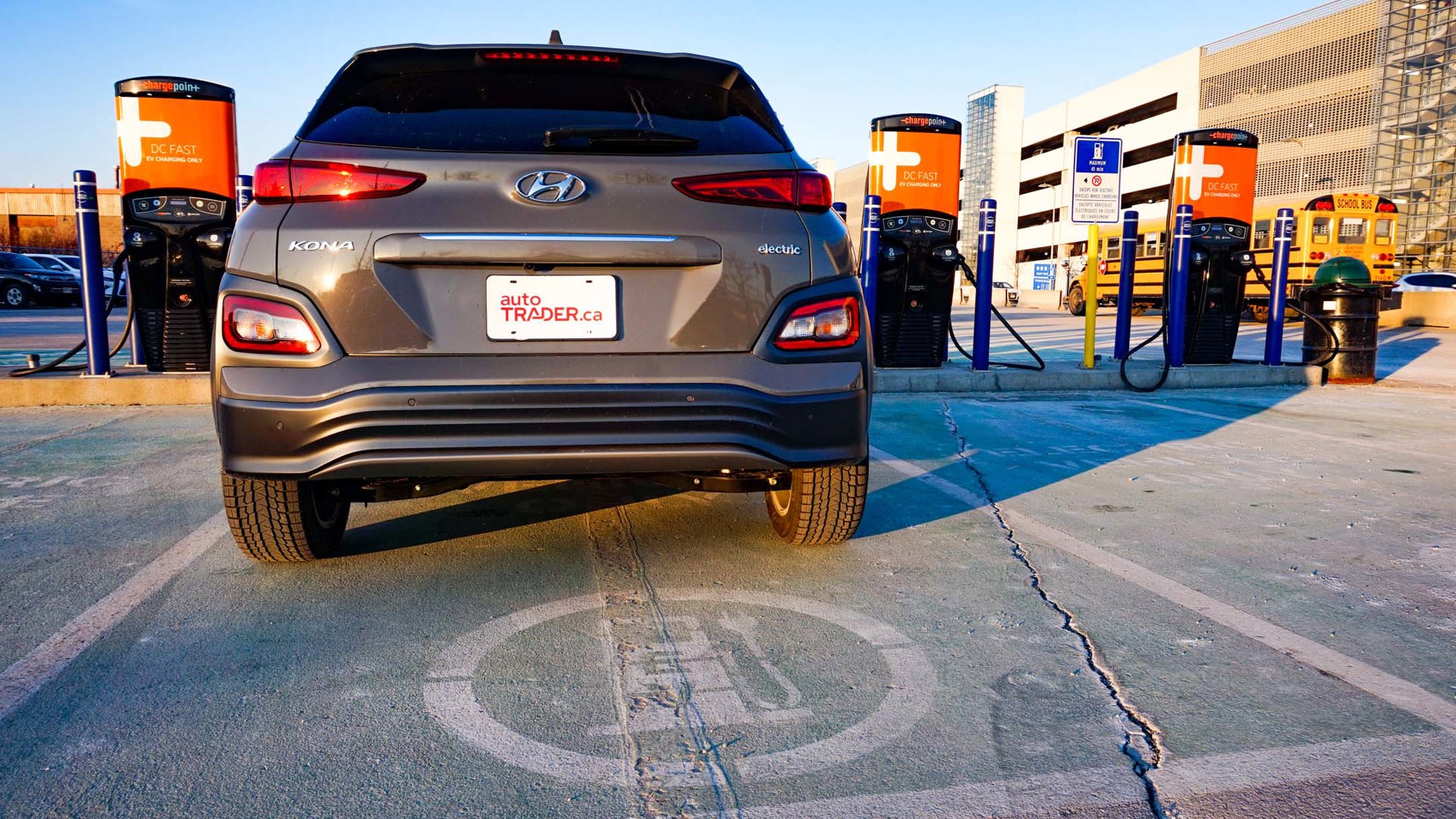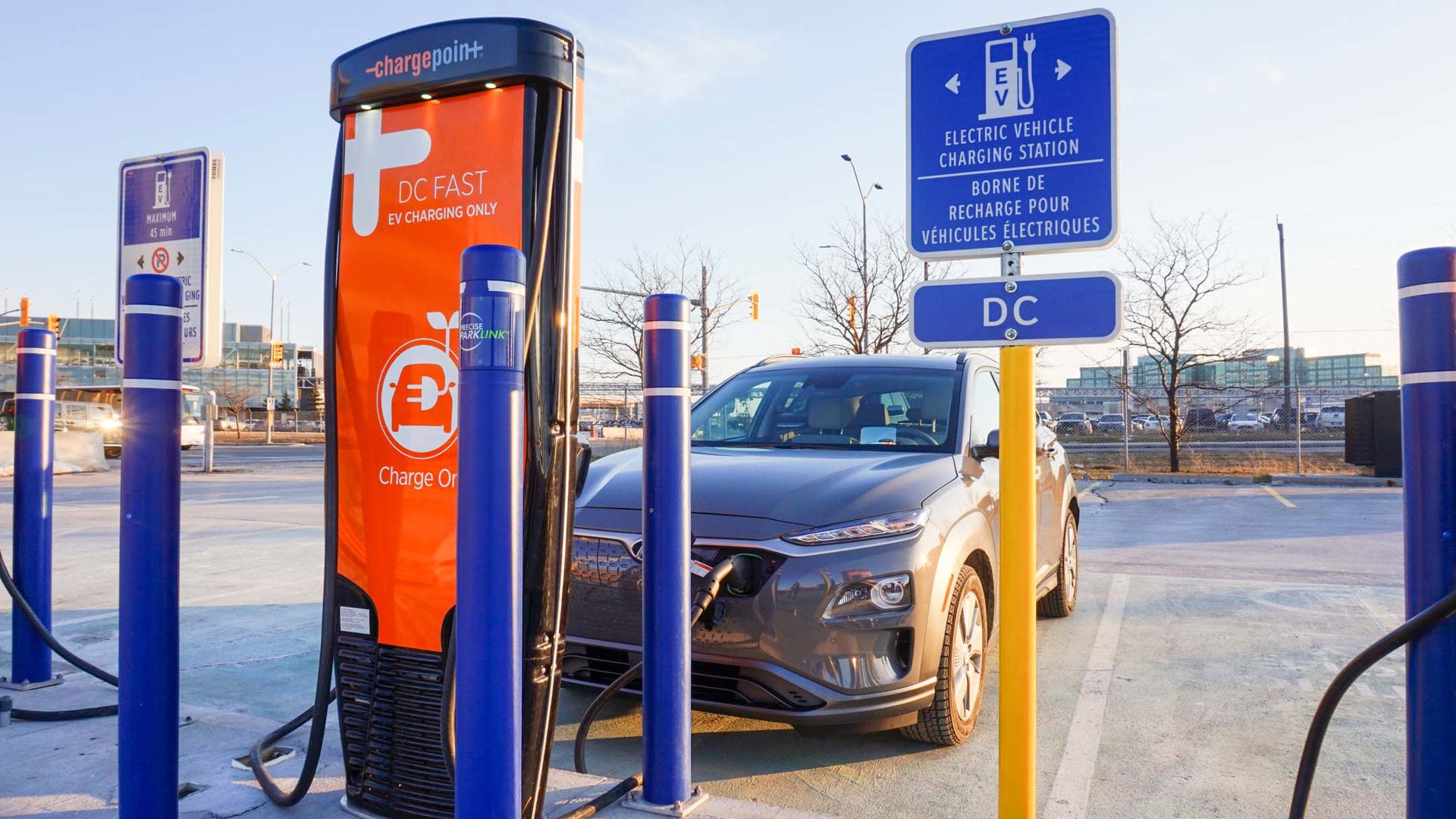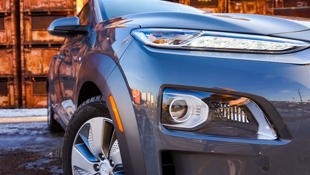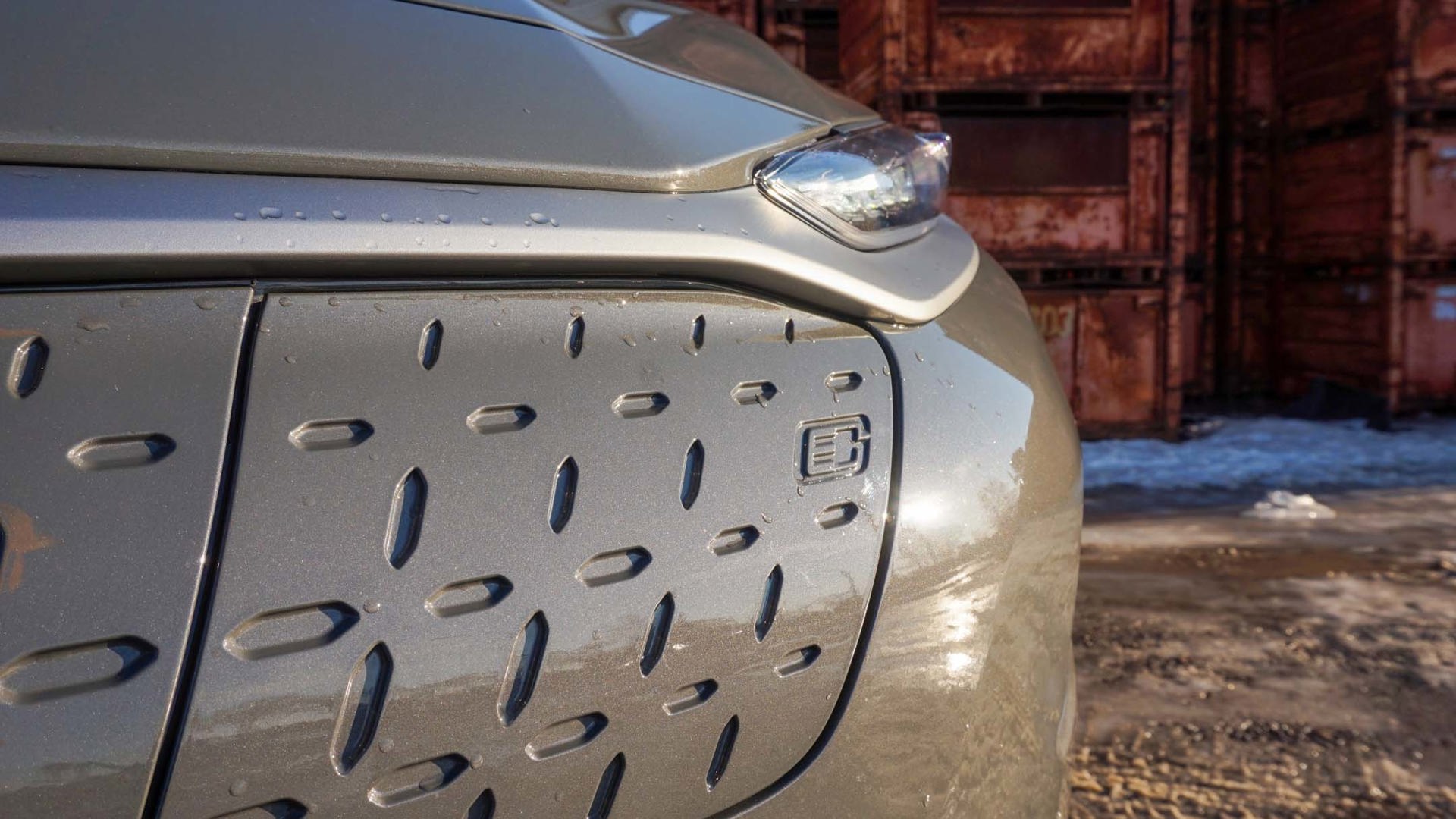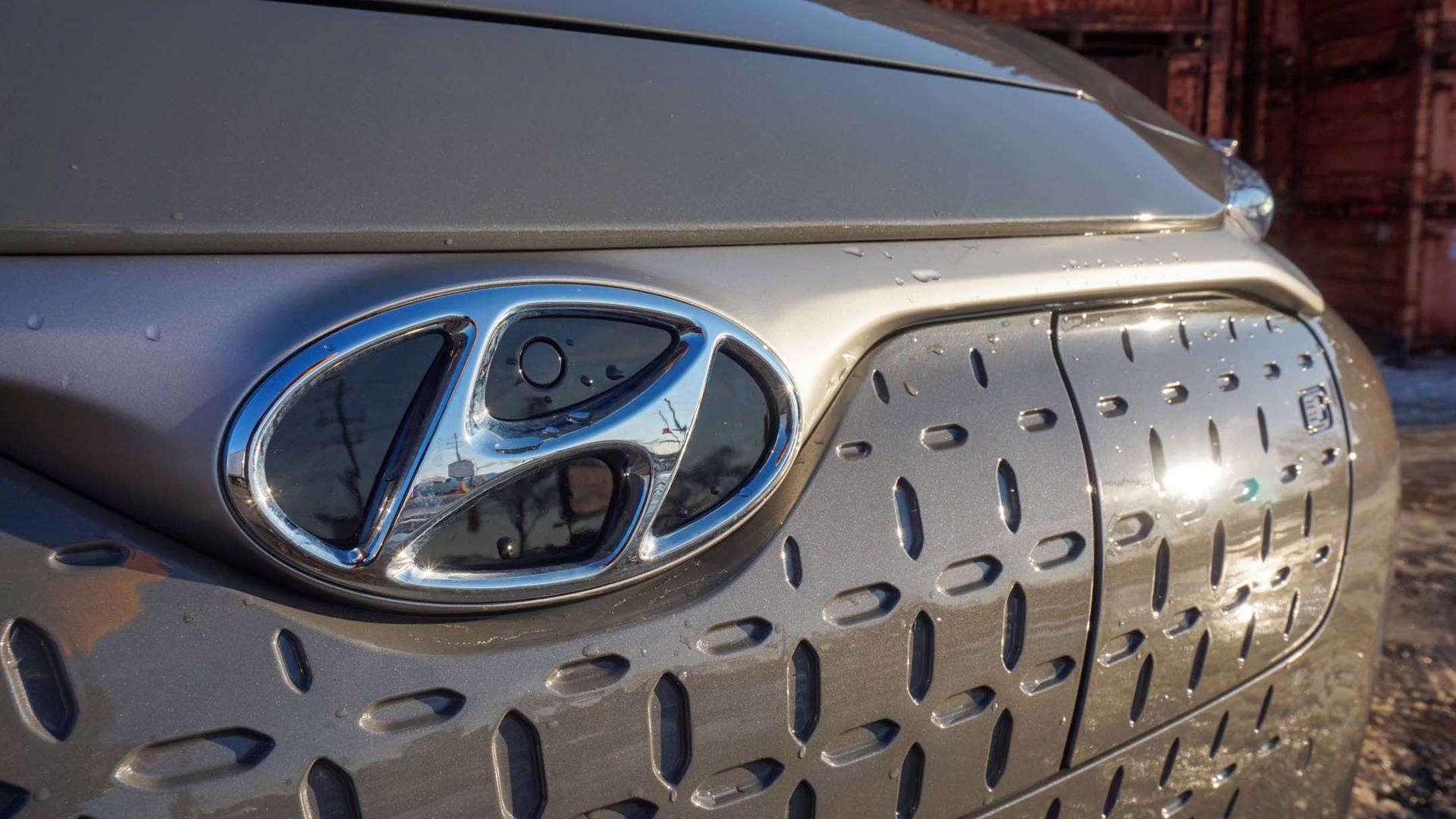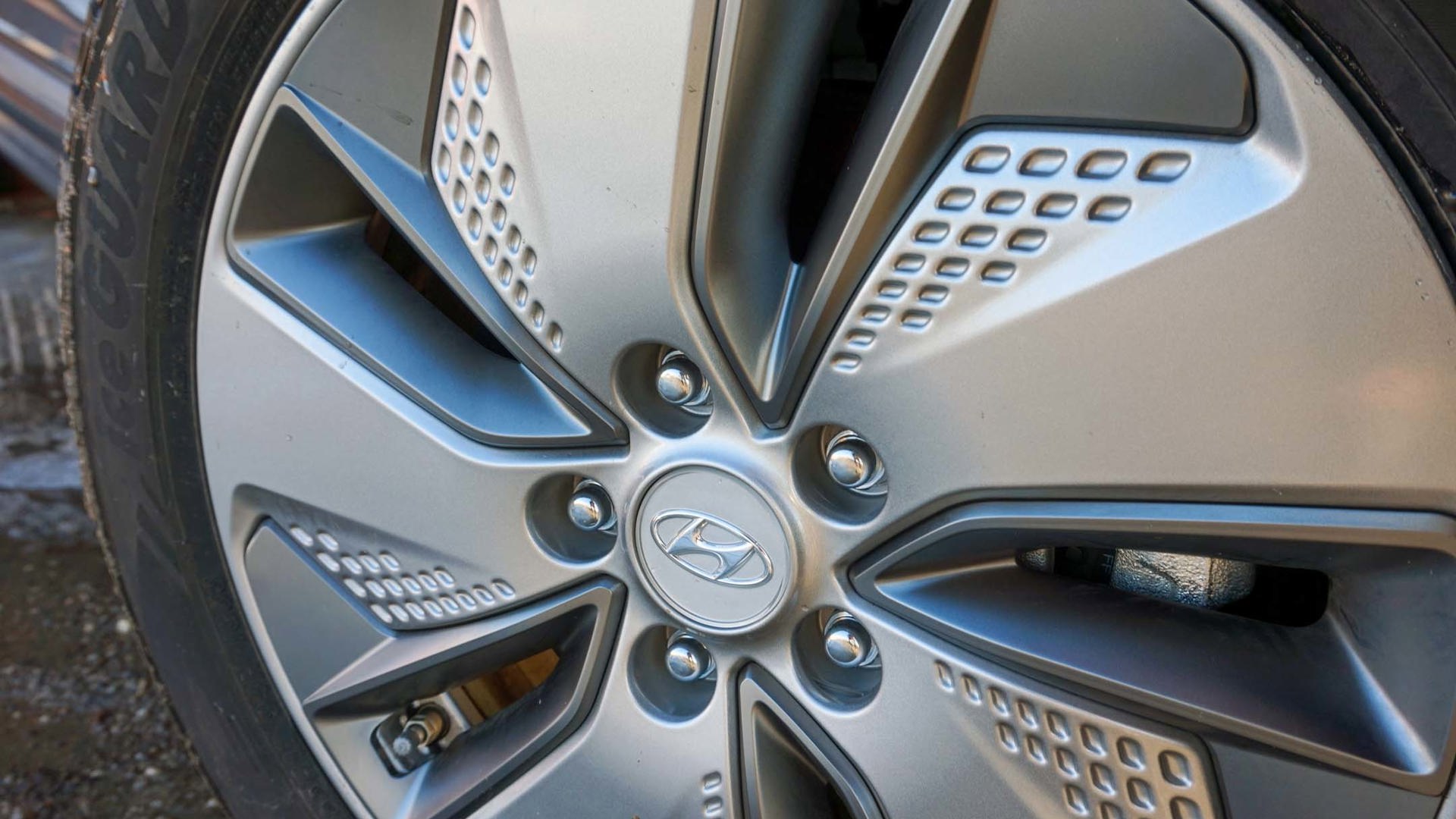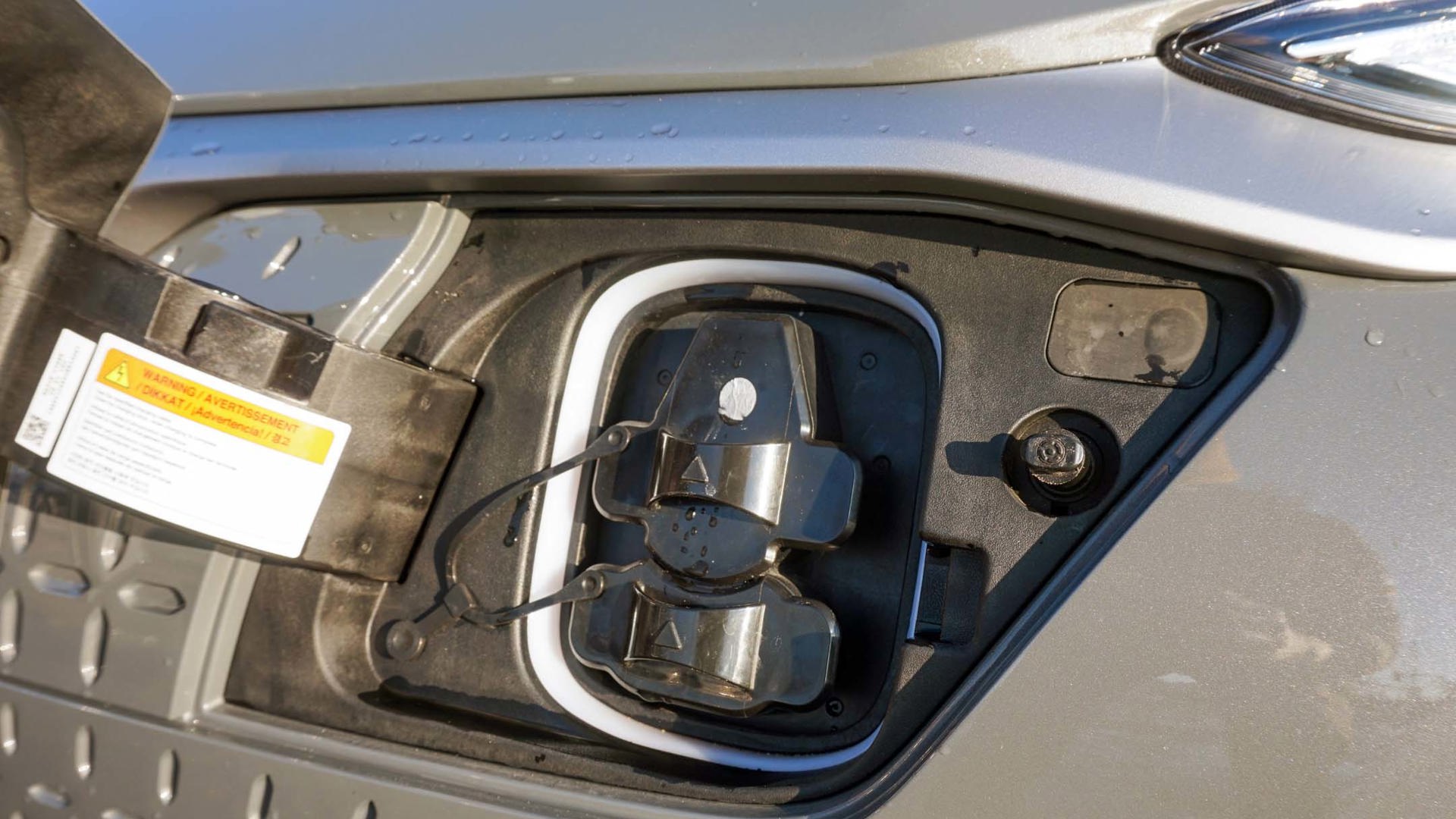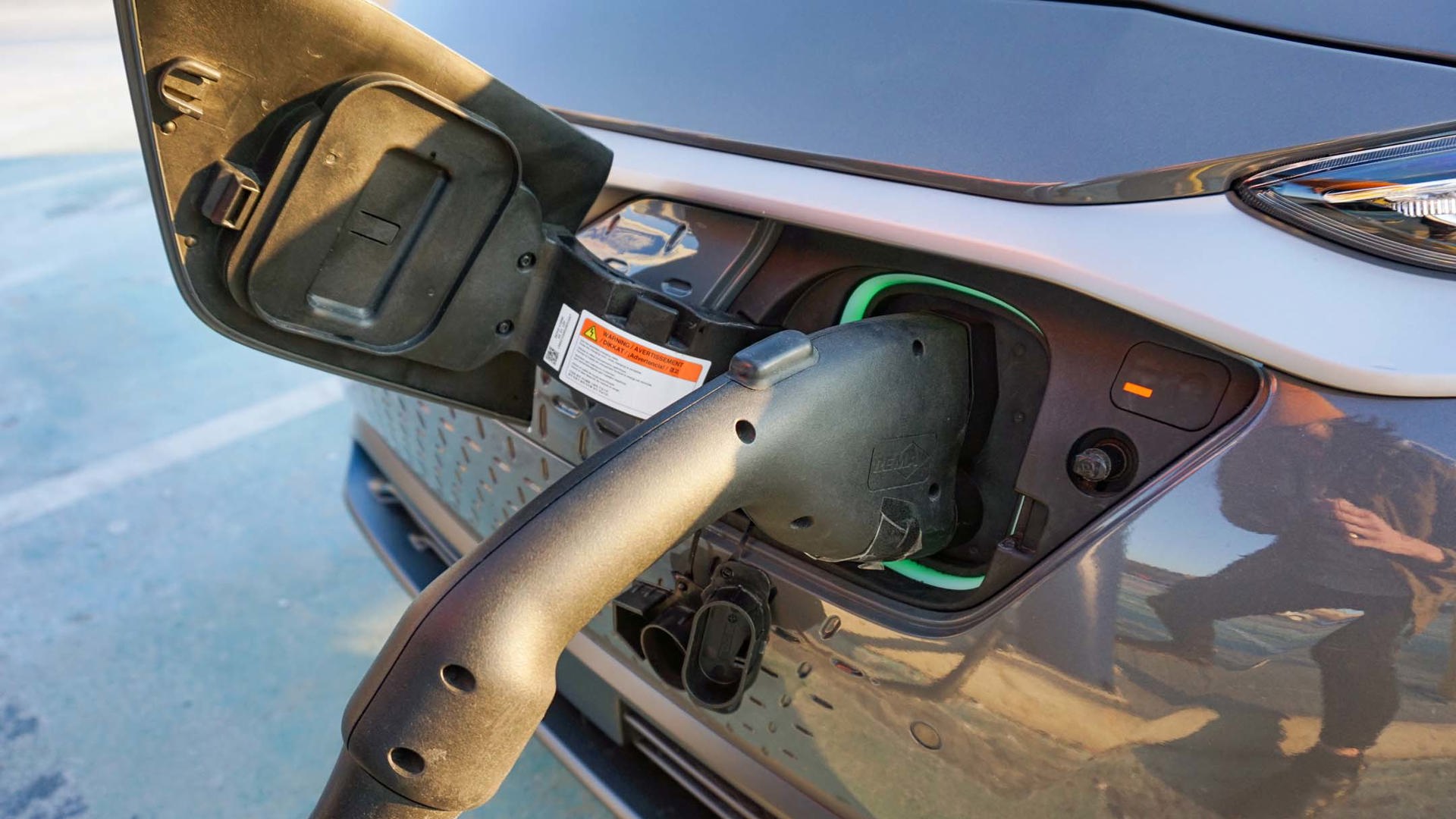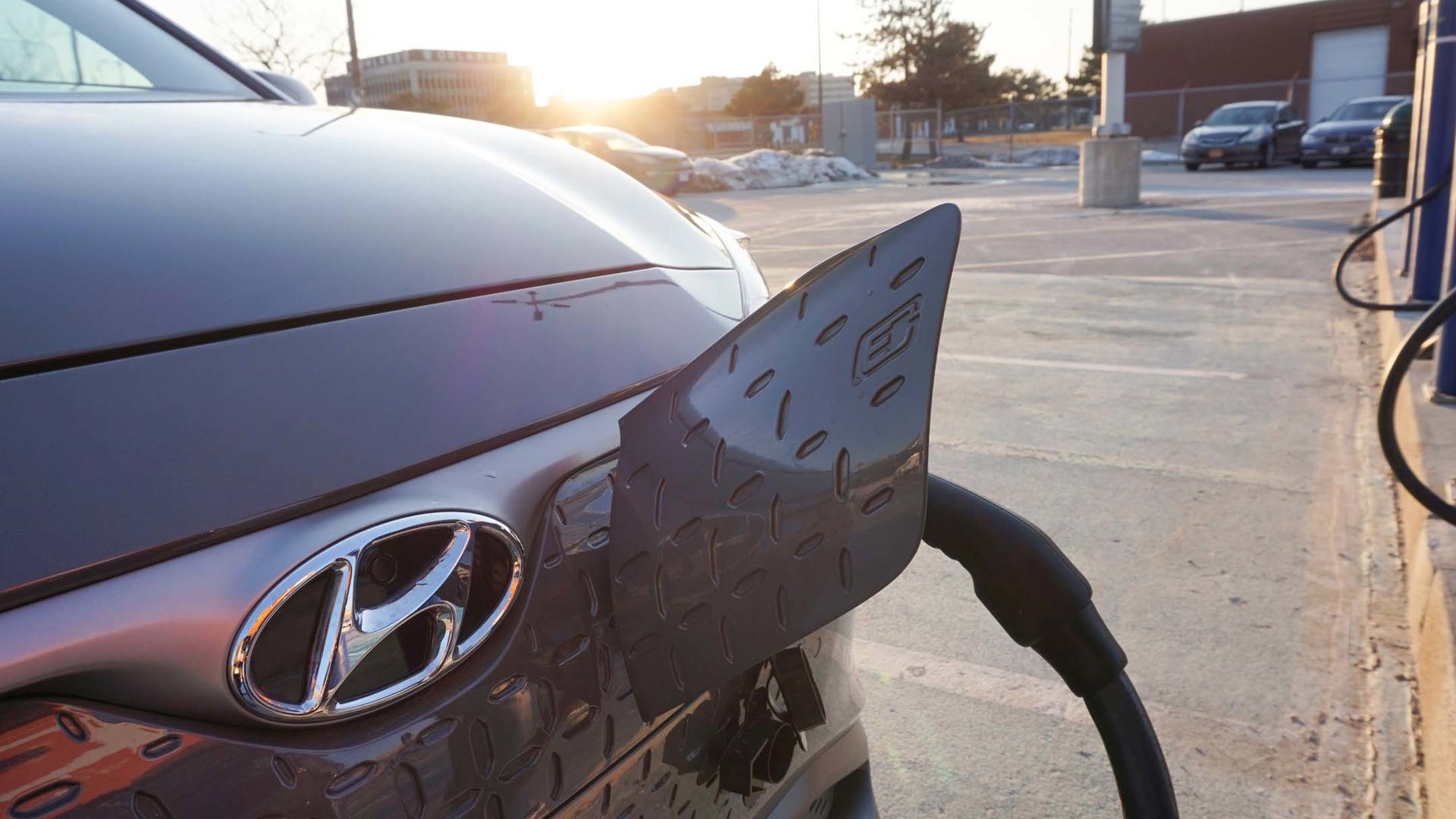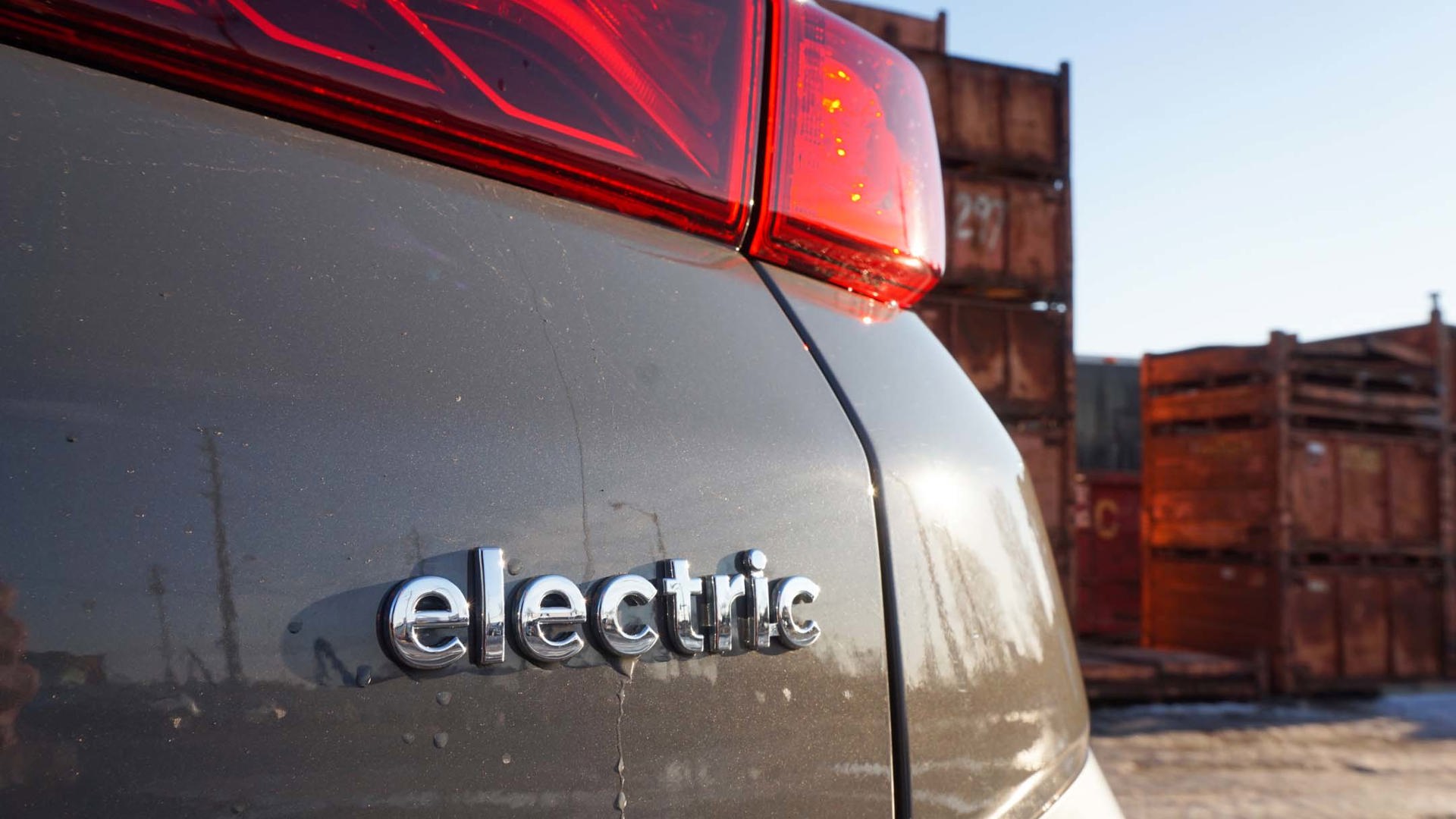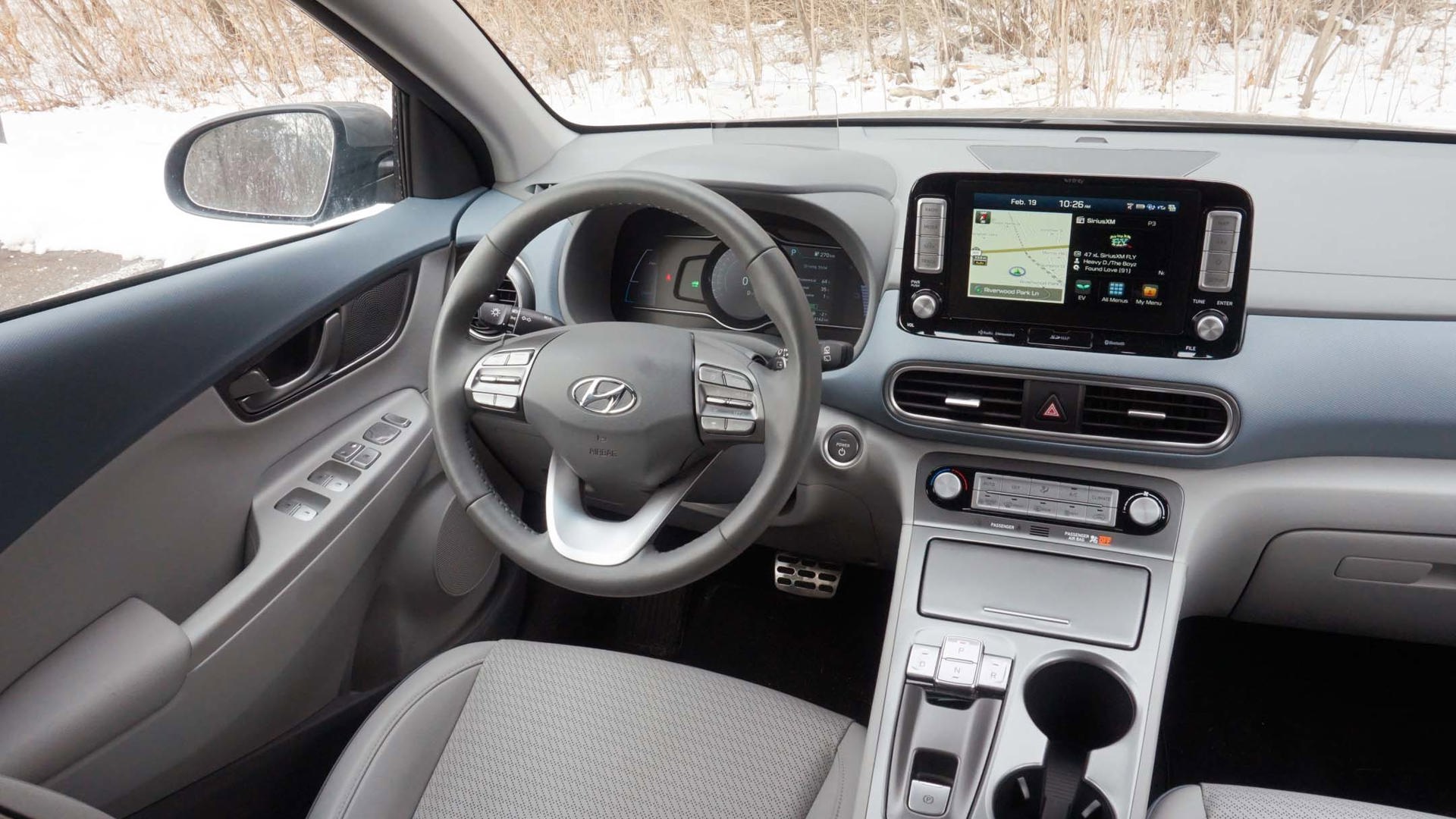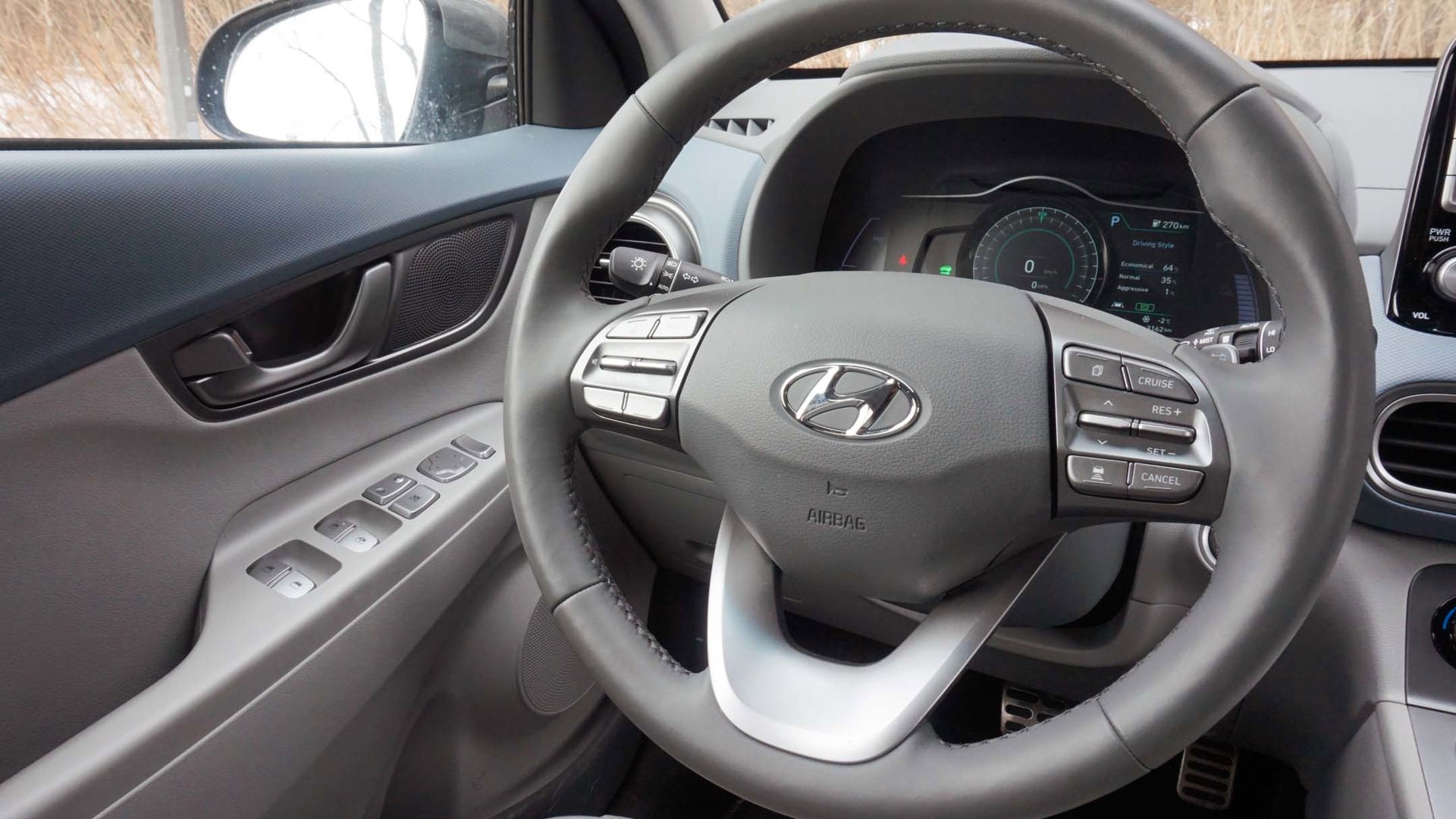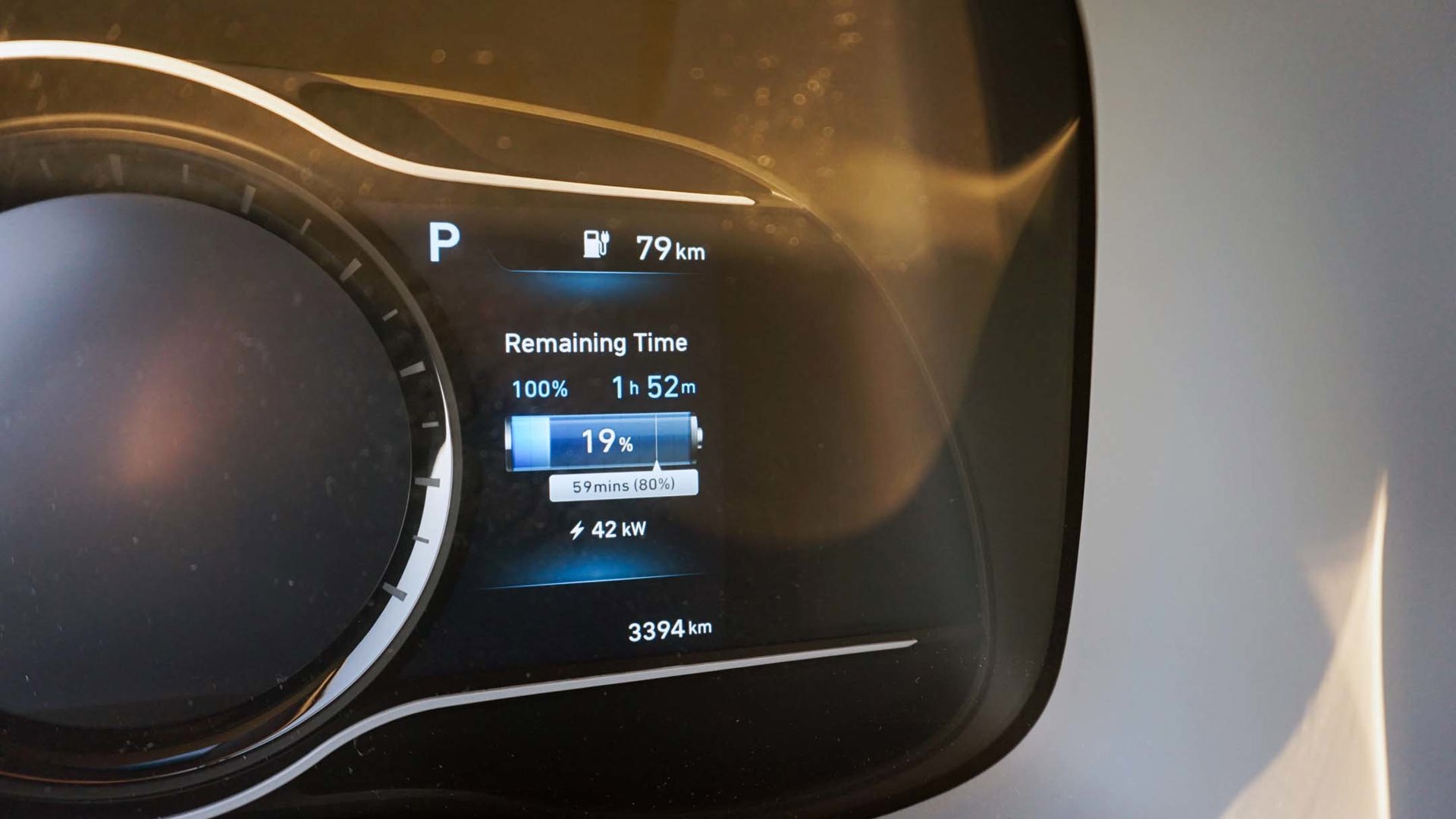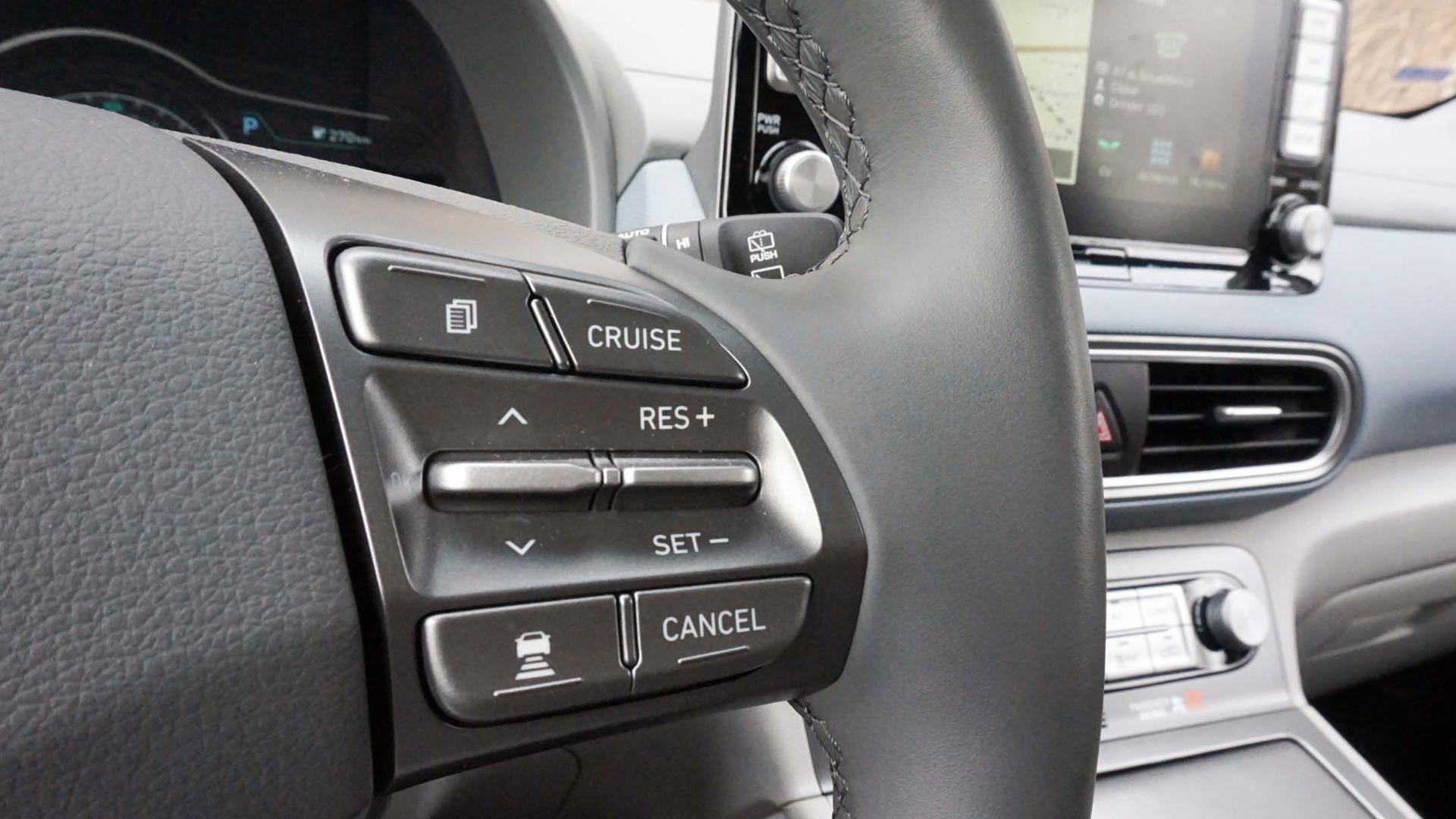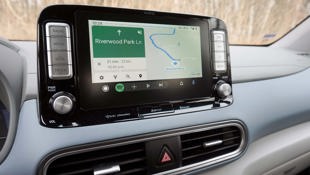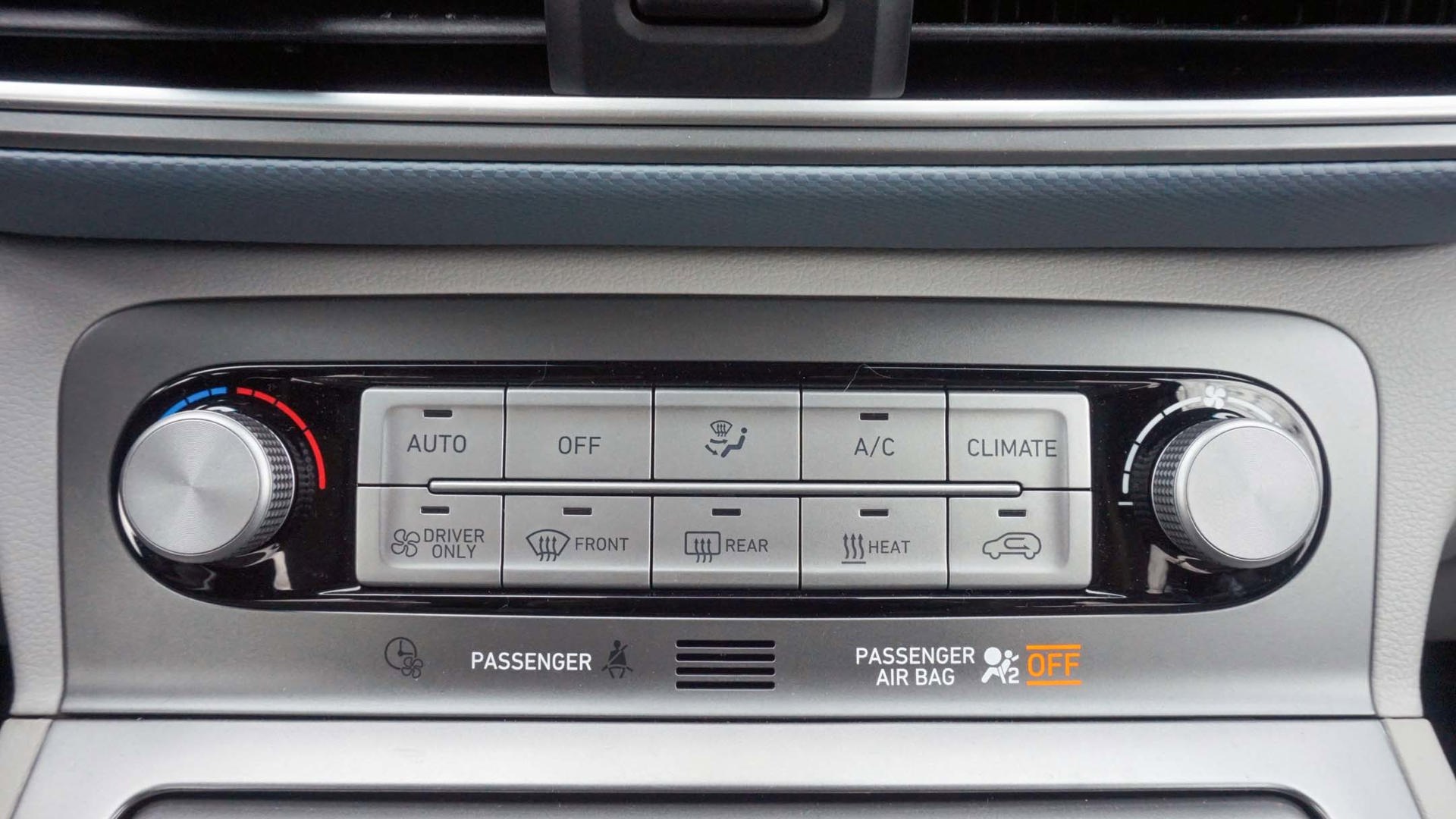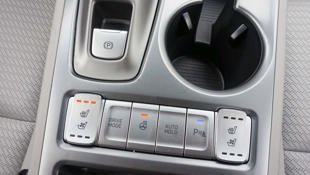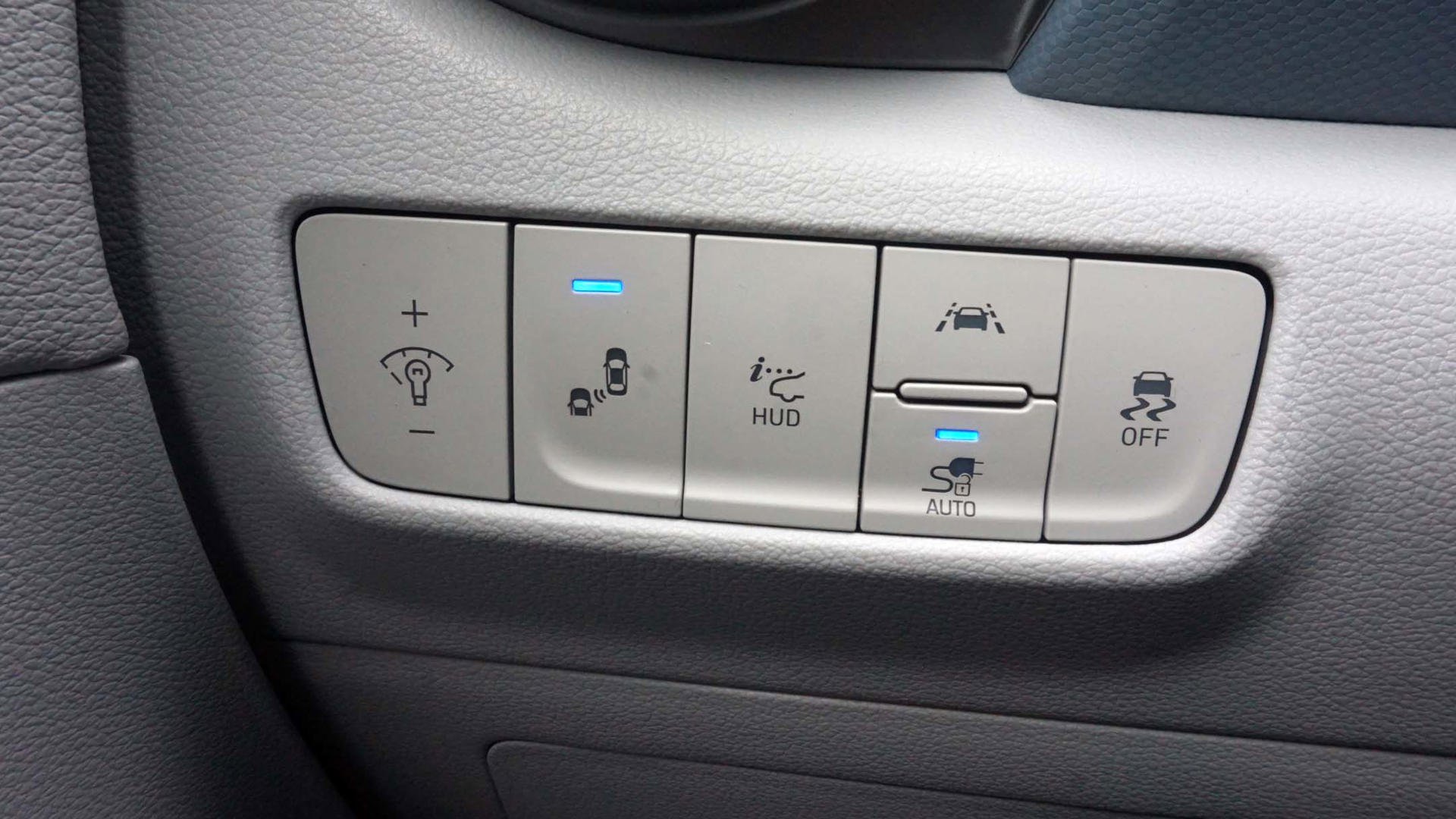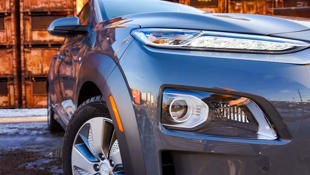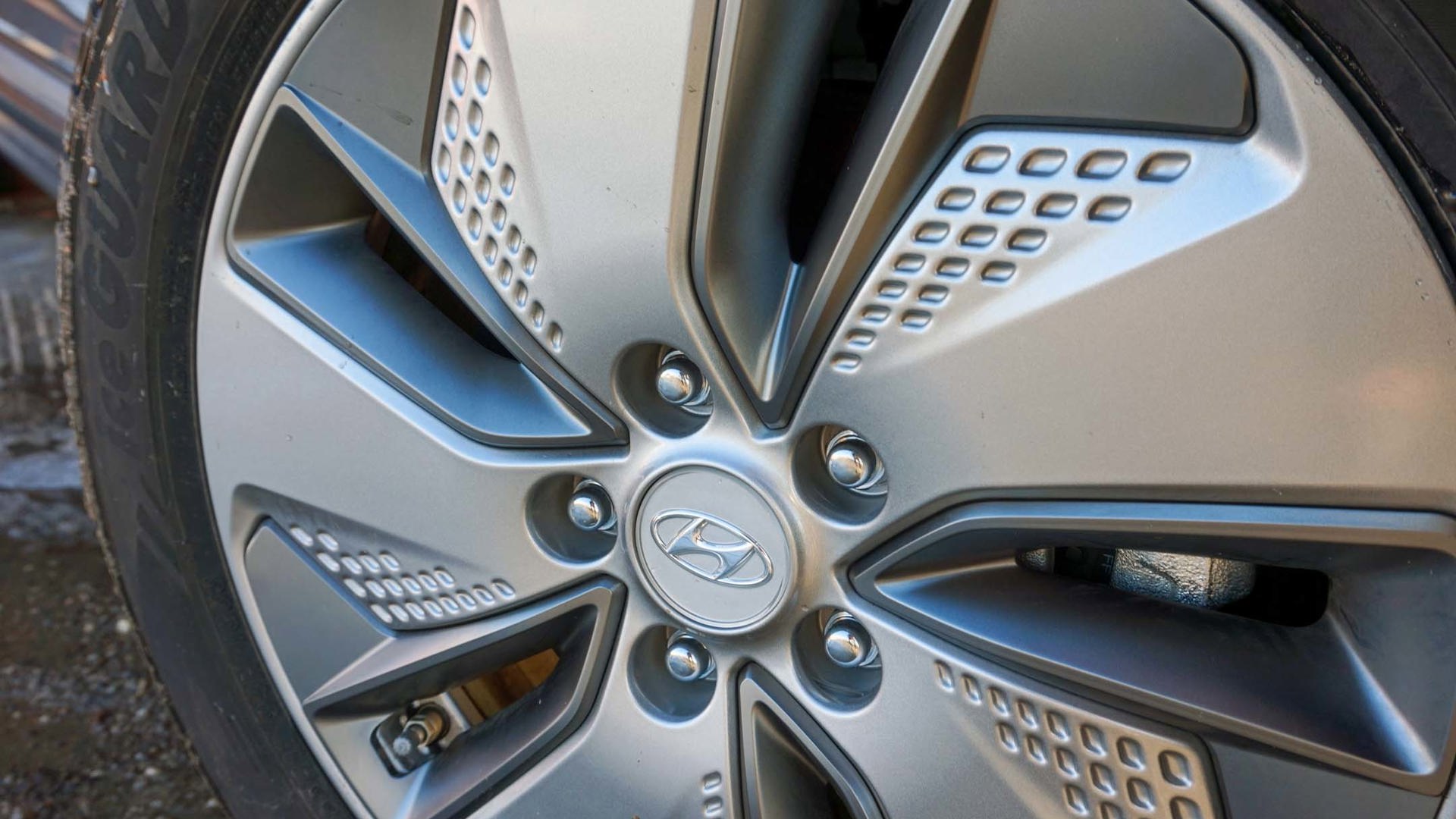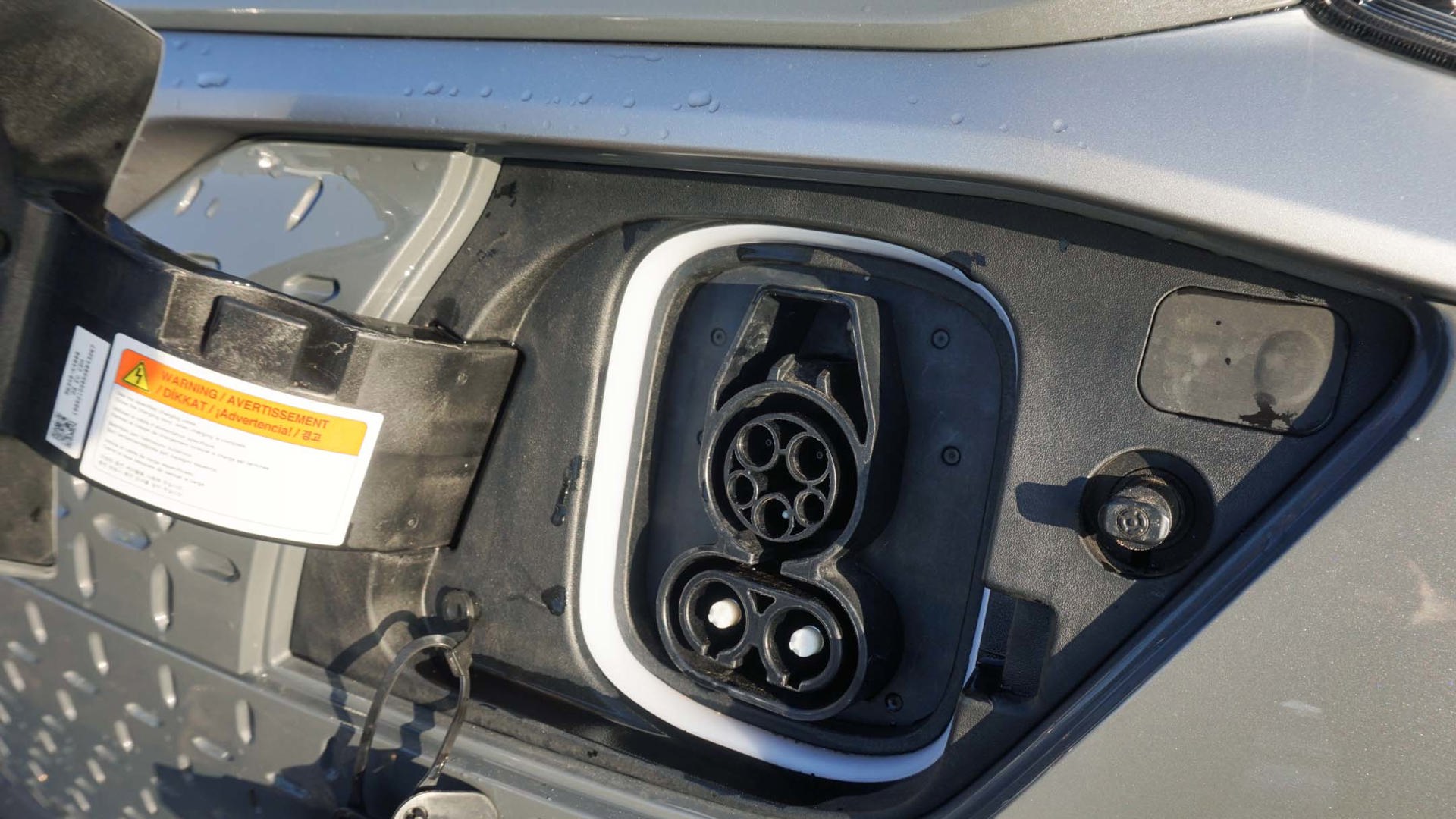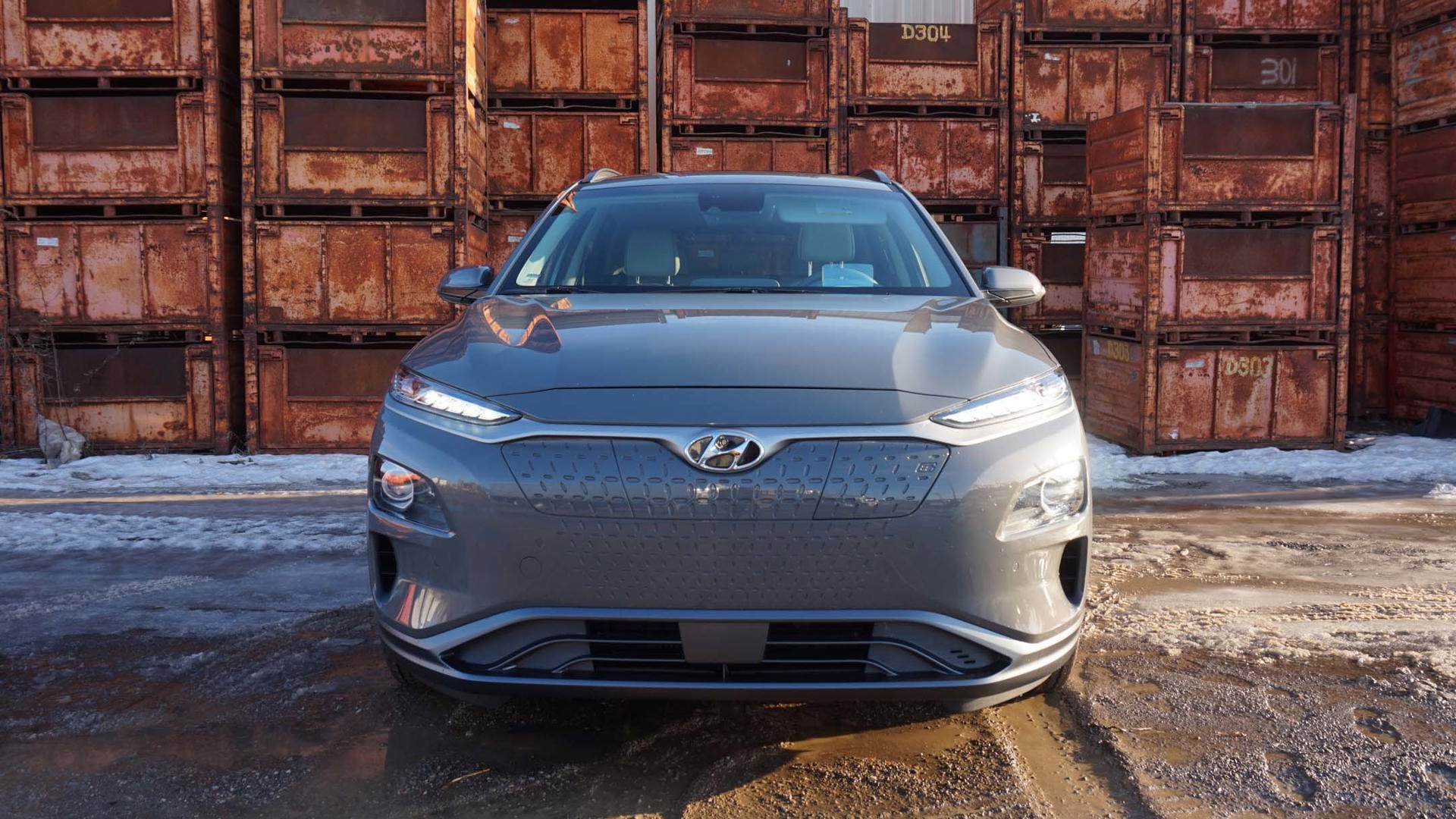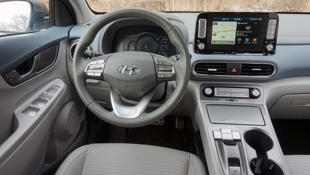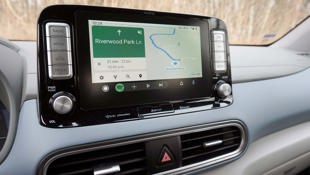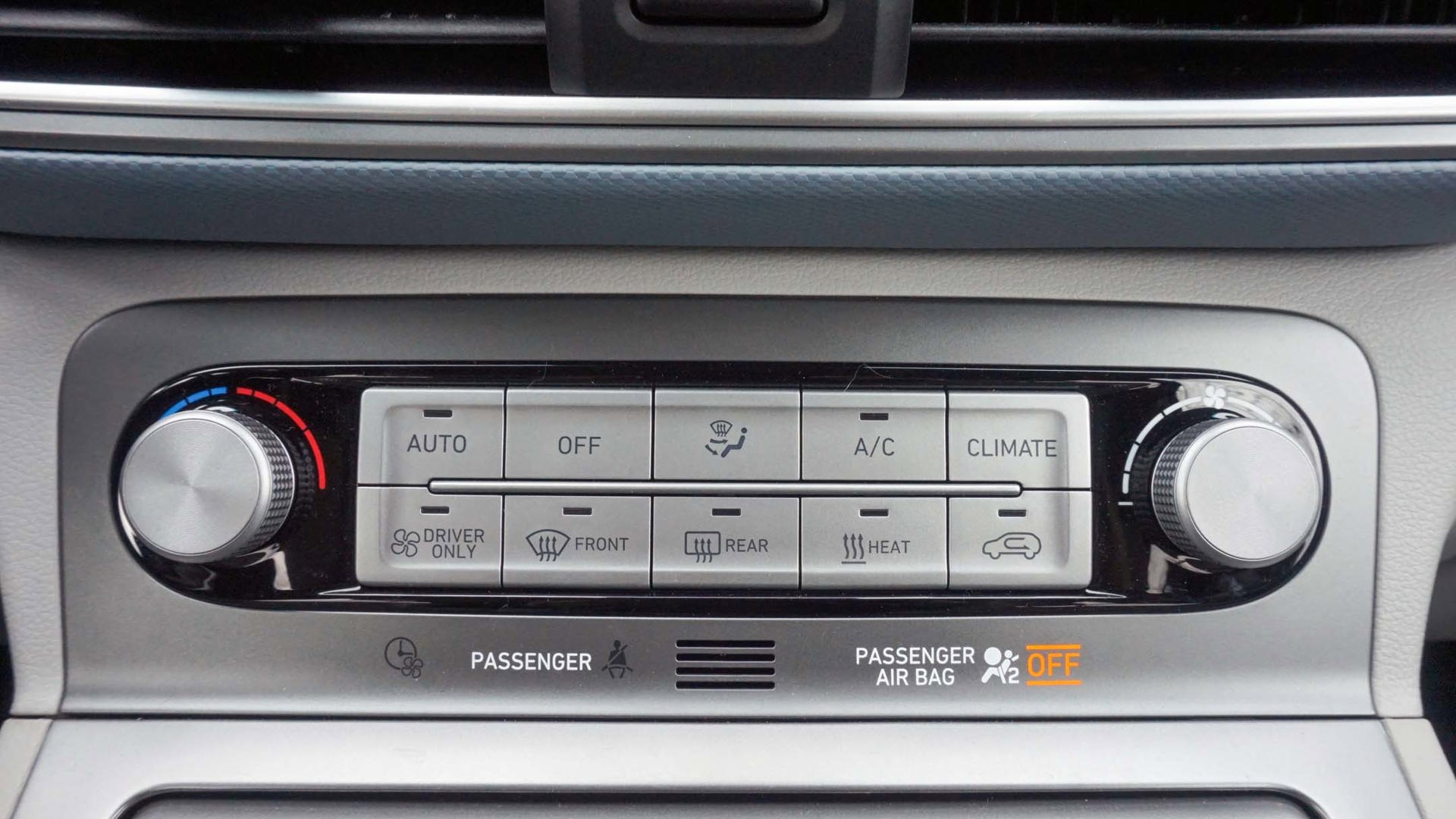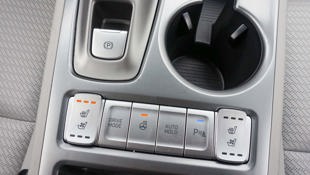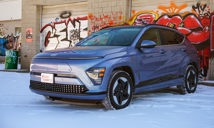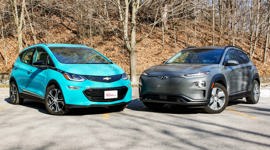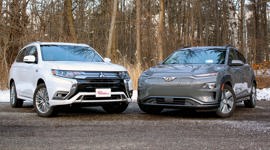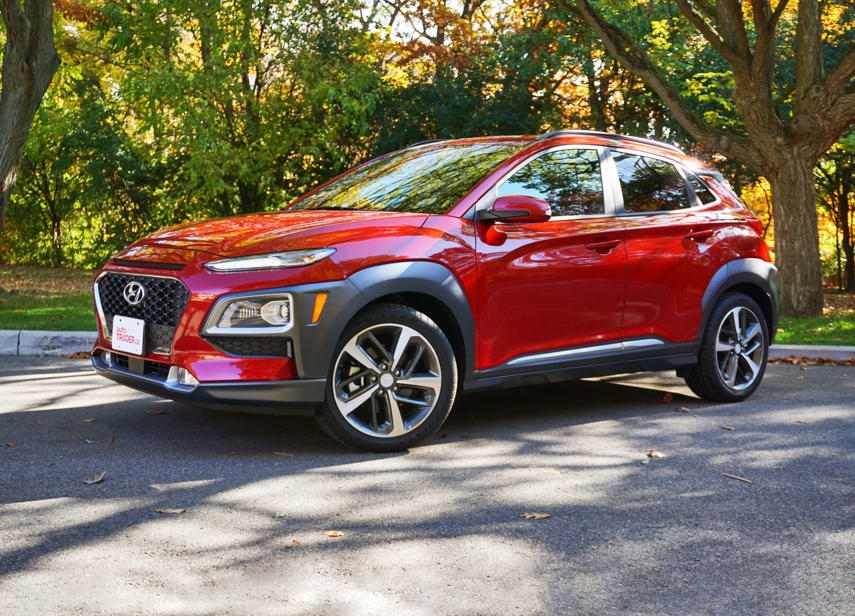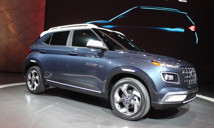 AutoTrader SCORE
AutoTrader SCORE
-
STYLING9/10
-
Safety9/10
-
PRACTICALITY7/10
-
USER-FRIENDLINESS9/10
-
FEATURES8/10
-
POWER9/10
-
COMFORT8/10
-
DRIVING FEEL8/10
-
FUEL ECONOMY10/10
-
VALUE8/10
The 2020 Hyundai Kona Electric is an alluring alternative to internal combustion cars that doesn’t actually feel like it should be an alternative. It’s good enough to be mainstream because it doesn’t demand many of the compromises that seem to be scaring many Canadians away from electric vehicle (EV) ownership.
This little all-electric crossover was also voted as the Best Green Vehicle for Under $50,000 in the 2020 autoTRADER.ca Awards by our panel of more than 20 automotive experts across the country. We already know it’s an excellent EV that has moved the benchmark higher for the whole segment, but I wanted to know what it was like to live with when the mercury dropped, so I embarked on a two-month test drive in real-world winter conditions (deep freezes, snow storms, etc.) to find out. Winter weather is unkind to cars in general, and EVs get a bad rap for being especially vulnerable, but my experience wasn’t as bad as I heard it would be.
Fuel Economy: 10/10
The Hyundai Kona Electric has an official rating of up to 415 kilometres of range on a full charge. The Chevrolet Bolt EV is rated at a similar 417 km, while the Kia Niro EV is rated at 385 km, the Kia Soul EV at 383 km, the Nissan Leaf Plus at 363 km, and the Hyundai Ioniq Electric at 274 km. Your real-world range could be higher or lower depending on many factors including weather, tire type, climate control, extra cargo or passengers, highway versus city driving, how gentle you are with the accelerator, how you use the regenerative braking, and more. The Kona EV calculates range estimates based on previous driving style, so it varies from driver to driver.
The Kona Electric’s range is one of the highest currently available, which contributes to its high “fuel economy” score. The better news is that on a 95 per cent charge, the Kona EV showed 430 km of range during my time with it, meaning a theoretical 100 per cent would have allowed approximately 450 km of gas-free driving – higher than the advertised range. What’s more impressive is that this charge was done on a cold day.
The Hyundai Kona EV is capable of 100-kW fast charging, which helps relieve any range anxiety. Plugging into a Level 3 fast charger for 70 minutes was good for 300 km of range. I don’t have a charger at home and the chargers at work are too expensive and slow, so I relied on public charging. The best part is that free charging, though rare, exists – there were two free Level 3 fast chargers within 15 minutes of my place, meaning I didn’t have to spend on charging if I didn’t want to. This is a bonus for those trying to understand the costs of EV ownership.
Powertrain: 9.5/10
The 2020 Hyundai Kona EV is powered by a 64-kWh lithium-ion polymer battery that allows the electric motor to output the equivalent of 201 hp and 290 lb-ft of torque. Power delivery is smooth and strong, and because that torque is instantly available, the Kona EV scoots and is rated to hit 100 km from a standstill in 7.9 seconds.
The Kona EV doesn’t use a traditional transmission; it gets power to the front wheels via a single-speed reduction gear, which means power delivery is seamless and instantaneous. It feels much like a continuously variable transmission (CVT) except more responsive. There are no hard shift points, which means you feel nothing except the car gliding forward. It’s also completely silent except for an angelic/ghostly hum that’s added at low speeds to warn nearby pedestrians.
The Kona EV has three levels of regenerative braking, which can be controlled via the paddle shifters behind the steering wheel or set via the infotainment screen. I used the most aggressive setting at all times, which allowed me to get close to the one-pedal driving that EV enthusiasts love so much.
Although the Kona EV’s powertrain is impressive, I docked half a point in this category because there’s no all-wheel drive available. While I don’t think it’s a necessity, a lot of Canadians want the extra confidence it provides. With a good set of winter tires, the front-wheel-drive Kona EV was more than capable of handling all the gross winter weather I experienced during my two months of testing.
Drivability: 8/10
The Kona EV is legitimately fun to drive and even has a Sport mode for those who want to prioritize fun over efficiency. A jab at the accelerator sends the Kona EV rocketing forward and, though it will impact range if you’re racing around, it makes passing slower moving vehicles and getting up to highway speeds effortless. For those who want to conserve energy, there’s also Comfort, Eco, and Eco+ modes that help the driver maximize efficiency.
Besides its quick acceleration, the Kona EV is agile and responsive, its tiny size making it easy to park, quickly change directions, and dart in and out of traffic. The steering has a good weight to it, and though it does feel quite digital, I appreciate the heft and responsiveness.
The Kona EV gets a bit rattled when driven over rough roads, with uneven pavement tossing the little car around, so some drivers might want a softer, more comfortable suspension setup. I enjoyed the one-pedal driving and aggressive regenerative braking, but my colleague mentioned that it was enough to cause motion sickness, so some drivers might want to use a less aggressive setting if they’re prone to an uneasy stomach.
If there is a weakness in the Kona EV’s driving dynamics, it’s that the brakes could be better. The anti-lock braking system (ABS) triggers far too quickly, with pretty much any firm braking causing the system to activate; not necessary when there’s no real danger. The system is far too sensitive and I would like to see it dialled back so that it’s effective without being panic-inducing.
When not using regenerative braking, the brake pedal requires more effort than normal for the binders to actually slow the car down, making it more difficult to drive smoothly. The brakes should be grabbier (the first bit of brake pedal movement doesn’t do much) so that a driver can be smoother with their inputs instead of slamming on the brakes because they didn’t slow down as quickly as they thought they would and then triggering the overly sensitive ABS.
The other issue is that while the adaptive cruise control (ACC) works smoothly like it should, my own driving style was more efficient. I wish the ACC was programmed to drive more efficiently rather than delivering constant bouts of acceleration.
Practicality: 7/10
The Kona EV is a small car, so cargo capacity isn’t amazing and it doesn’t help that it doesn’t have a front trunk like some other EVs. With 544 L in the trunk and 1,296 L with the rear seats folded flat, it’s much smaller than the Chevrolet Bolt EV’s 1,603 L with the seats down (though the Bolt has just 479 L behind the rear seats). I took the Kona EV to pick up an armchair, and the chair’s legs had to be removed in order to fit inside. Carrying larger items is possible, but doing so might require some creative solutions. If you’re looking for an EV that has generous cargo room, there aren’t many affordable options right now, so that’s one concession some drivers might need to make.
Styling: 9/10
I’m a fan of the Kona EV’s styling. Except for the lack of a grille (EVs don’t need them), the little CUV looks pretty much like a conventional car, which is a great way to get people into EVs. I appreciate that the Kona EV doesn’t look like an alien car and that its proportions look proper. Only the Kona EV Preferred trim is offered with the same contrast roof option as the gas-powered models, and I wish more fun colours were available.
Inside, there are some cheap plastics used throughout, but the texturing of some dash panels helps. For the price, I would love to see a more upscale interior.
Comfort: 8/10
One downside to the Kona EV’s small size is that it can be a bit tight for taller drivers and passengers in terms of head- and legroom. Even with a shorter driver up front, legroom for rear passengers is at a premium, which makes it a bit cramped and far too easy for kids to put their dirty boots on the seatback. As a shorter driver who stands at about 5-foot-6, it was plenty roomy for me.
The small windows and raked roofline make outward visibility an issue and, as I mentioned earlier, some people might think the suspension setup is too stiff.
Usability: 9/10
The Hyundai Kona EV has a leg up on many of its competitors because of how conventionally it operates. All the switchgear and controls are immediately user-friendly and everything is exactly where you think it will be. Even when it comes to the button-operated “PRND” controls for the transmission, it’s entirely intuitive. Other EVs insist on using weird knobs or levers to operate, and they’re never this easy to use.
For drivers who are new to EVs, this is probably the easiest one to get accustomed to – there’s absolutely no learning curve required. If you have no idea how to drive efficiently, the Kona EV has useful coaches to help you visualize and understand how to optimize your energy consumption. Even the navigation system helps visualize how far you can go with your current range and will show you charging stations along the way.
Another cool aspect is that you can nerd out over the EV stuff and customize the car’s settings to your liking or you can be completely hands-off. All the configuration can be done through the touchscreen, which is also easy to use. The screen itself is clear and responsive, and though there are faster and more modern systems out there, this one is very intuitive.
Features: 8/10
Every Kona EV comes to Canada with a battery temperature management system that optimizes the battery’s temperature to minimize the effect of the cold on the car’s range. When plugged in, it pre-warms the battery for optimized performance. The Canadian Kona Electric now also gets a standard heat pump system that reduces the energy required of the HVAC system to heat the cabin, which helps save range.
The Kona also comes with BlueLink, a telematics system that hooks up to an app on your phone where you can see if the car is locked or not, check on what the range is, and start the car remotely and pre-warm the car before you get in. As long as your car has reception and isn’t parked a few levels underground, it can be useful, but it’s not exactly necessary.
Hyundai got rid of the base Essential trim Kona Electric this year, so the lineup starts with the Preferred model, which is better equipped and has more value. Standard equipment includes Apple CarPlay and Android Auto, automatic climate control, heated steering wheel, heated front seats, a 7-inch touchscreen, manual seats, adaptive cruise control with stop-and-go, and more.
I tested the 2020 Hyundai Kona Electric Ultimate, which includes bonus features like heated and ventilated front seats, a head-up display (the pop-up kind that’s projected onto a cheap-looking plastic flap), leather seats, eight-way power driver’s seat, garage door openers, rain-sensing wipers, a larger 8.0-inch touchscreen, wireless phone charging (the car reminds you if you’re about to leave without taking you phone), auto-dimming rear-view mirror, and sunroof.
Safety: 9/10
Every Kona EV comes standard with lane-keep assist, forward collision warning, blind-spot warning, lane-change assist, rear cross-traffic alert, reverse parking sensor, forward collision assist with pedestrian detection, and driver attention warning. Moving up to the Ultimate trim adds front and rear parking sensors, high-beam assist, and active cornering headlights.
The Insurance Institute for Highway Safety (IIHS) has rated the regular gas-powered Kona as a Top Safety Pick but doesn’t yet have a rating for the EV version.
Value: 8/10
Without provincial government incentives (currently only available in British Columbia and Quebec), the price for the Kona Electric is tough to justify. The base Preferred model starts at $45,599 not including taxes and the $1,810 destination fee. The topline Ultimate model I tested goes for $51,999 but I don’t think it’s worth the premium over the Preferred model, which has all the features I want plus the option of the contrast roof.
Although the price is comparable to the other EVs in the segment, it’s not yet attractive enough to sway me from buying a similarly priced gas-powered car that’s larger and has more features – even with the federal green car rebate that provides up to $5,000 off the purchase of a Kona Electric. For less money than the base Kona EV, I can get a fully loaded Honda Accord Hybrid, for example. The availability of free charging and not having to do oil changes and other regular servicing, however, does help the cost equation in the long term.
The Verdict
Rather than being considered by drivers who are specifically looking for a green car or EV, the Hyundai Kona Electric should really be considered by anyone looking for a subcompact or compact car, period. As long as the price isn’t an issue or you’re eligible for incentives, the Kona EV is a fantastic-driving and user-friendly vehicle that is suitable for both electric-car fanatics and people new to EV life.
| Engine Displacement | 150 kW electric motor |
|---|---|
| Engine Cylinders | 64 kWh lithium-ion polymer battery |
| Peak Horsepower | 201 hp |
| Peak Torque | 290 lb-ft |
| Fuel Economy | 1.8/2.2/2.0 Le/100 km; 415 km range |
| Cargo Space | 544 / 1,296 L seats down |
| Model Tested | 2020 Hyundai Kona Electric Ultimate |
| Base Price | $51,999 |
| A/C Tax | $100 |
| Destination Fee | $1,810 |
| Price as Tested | $54,109 |
|
Optional Equipment
$200 – Galactic Grey Paint, $200
|
|
